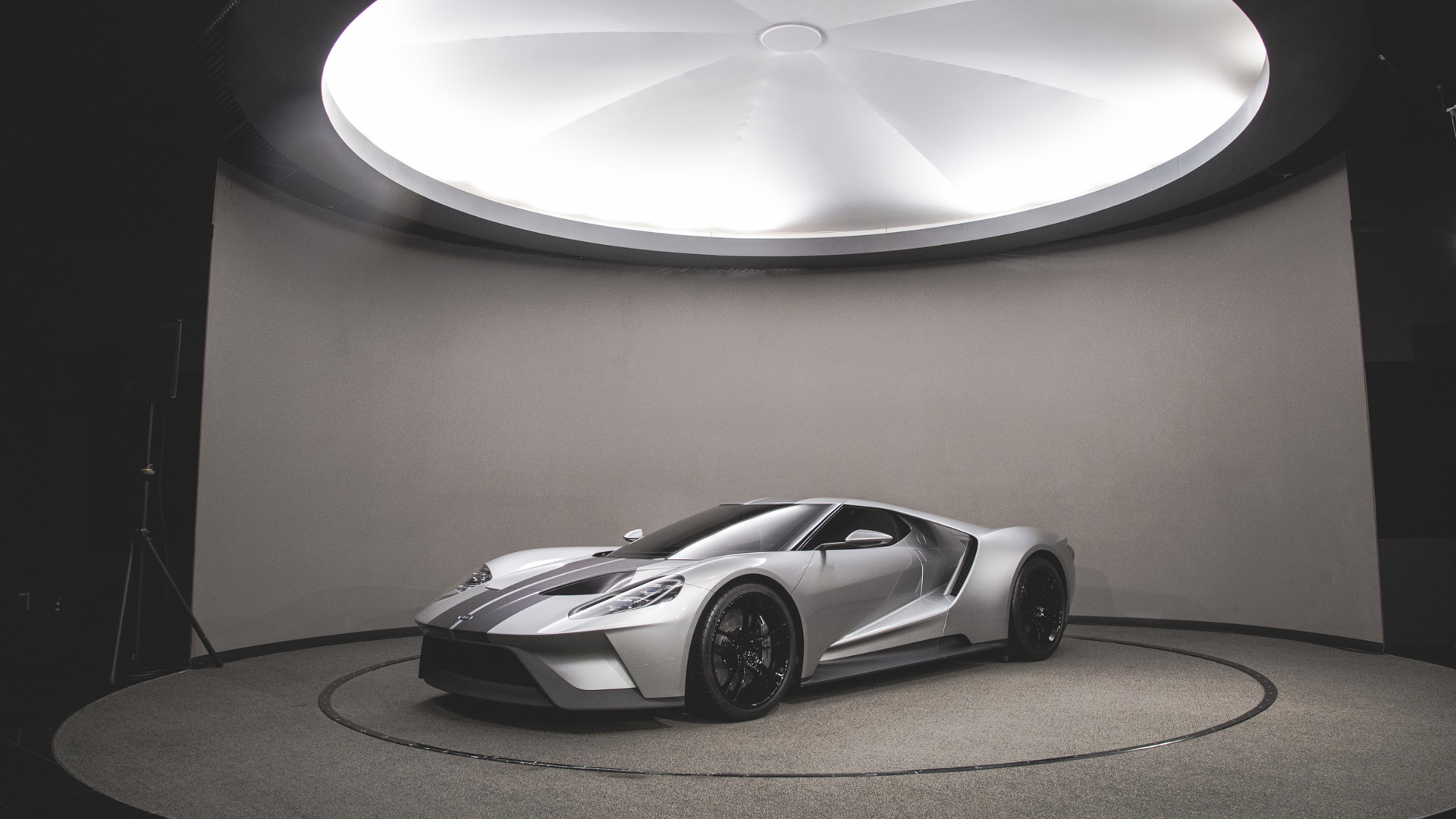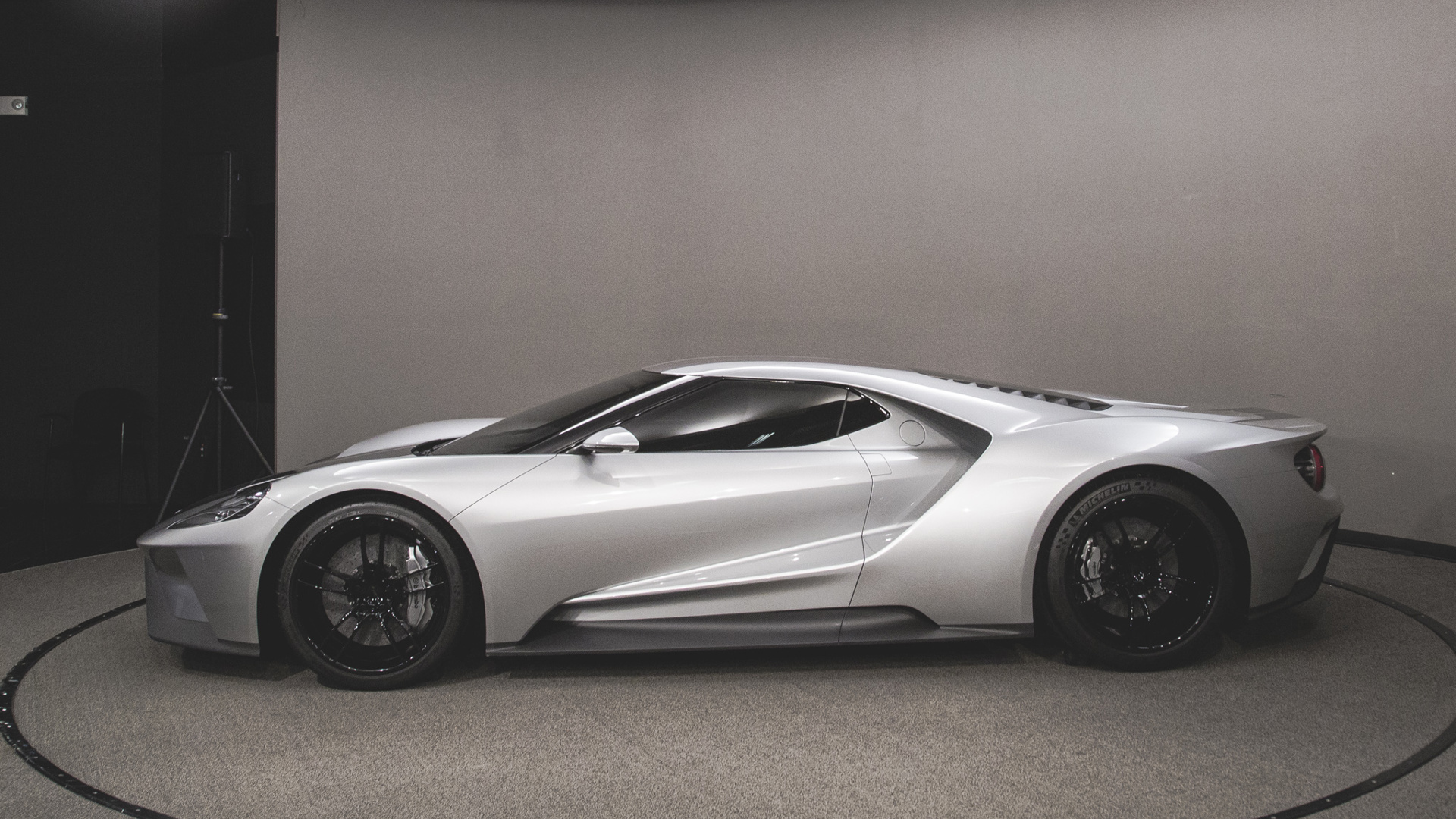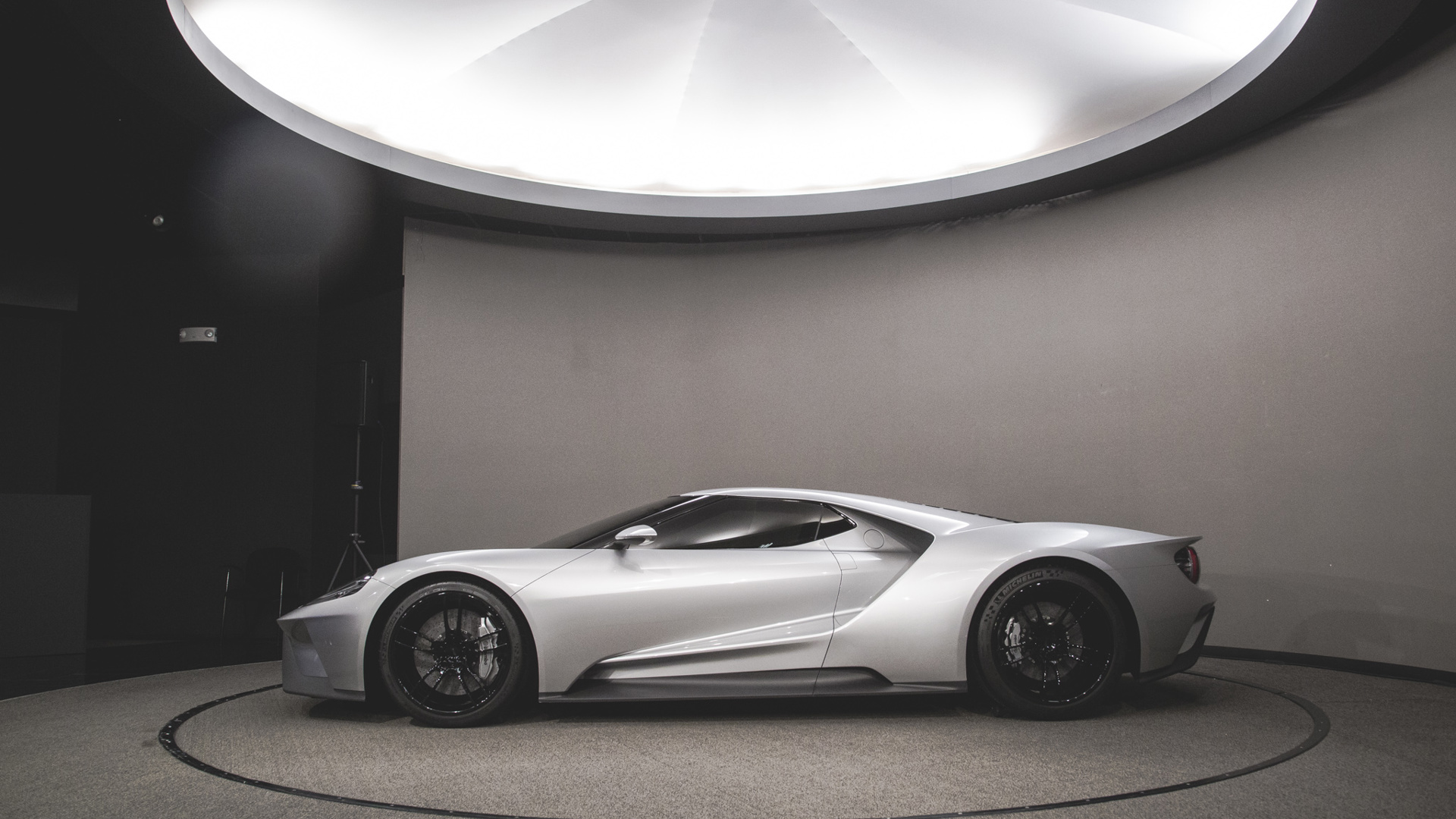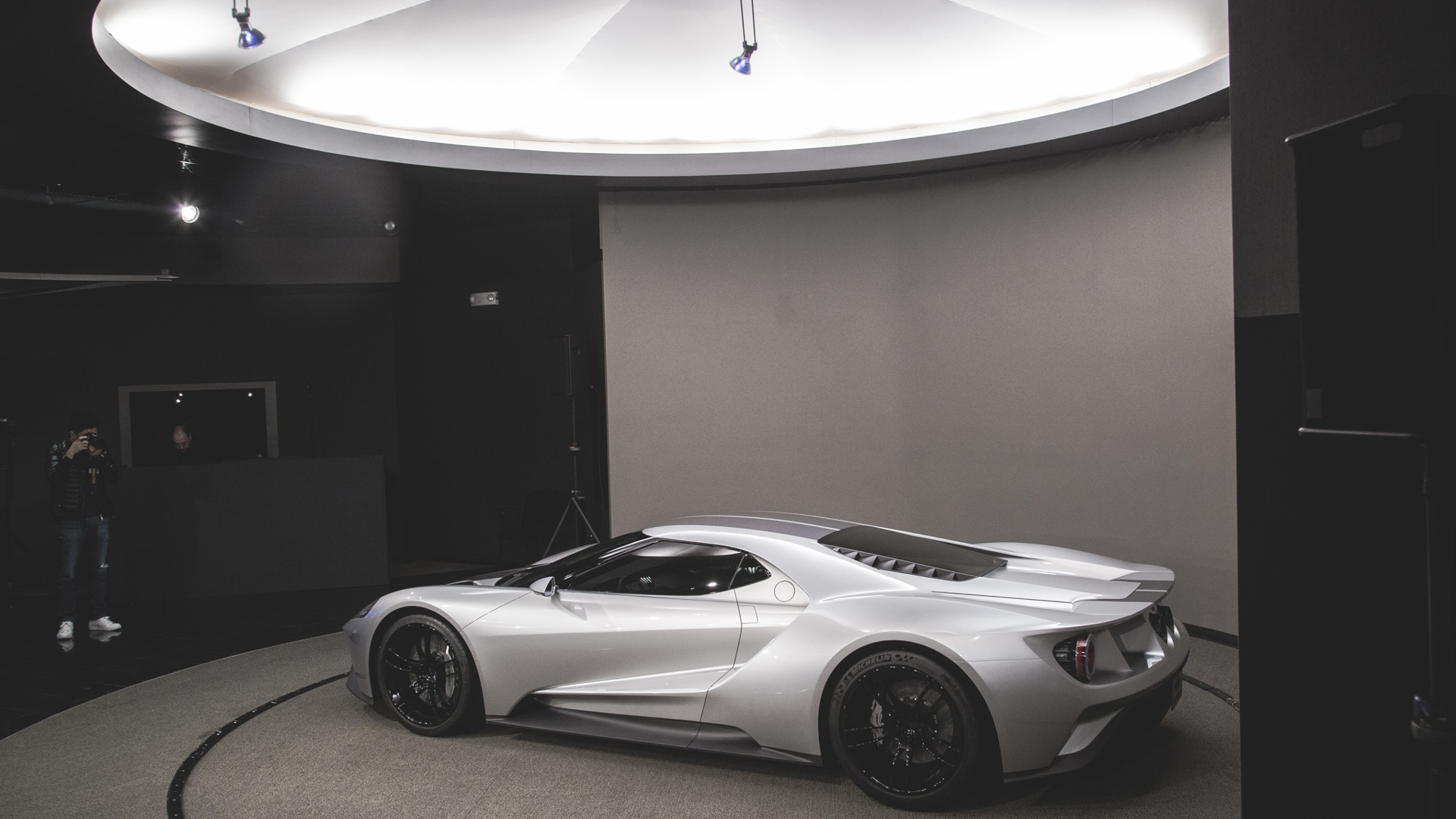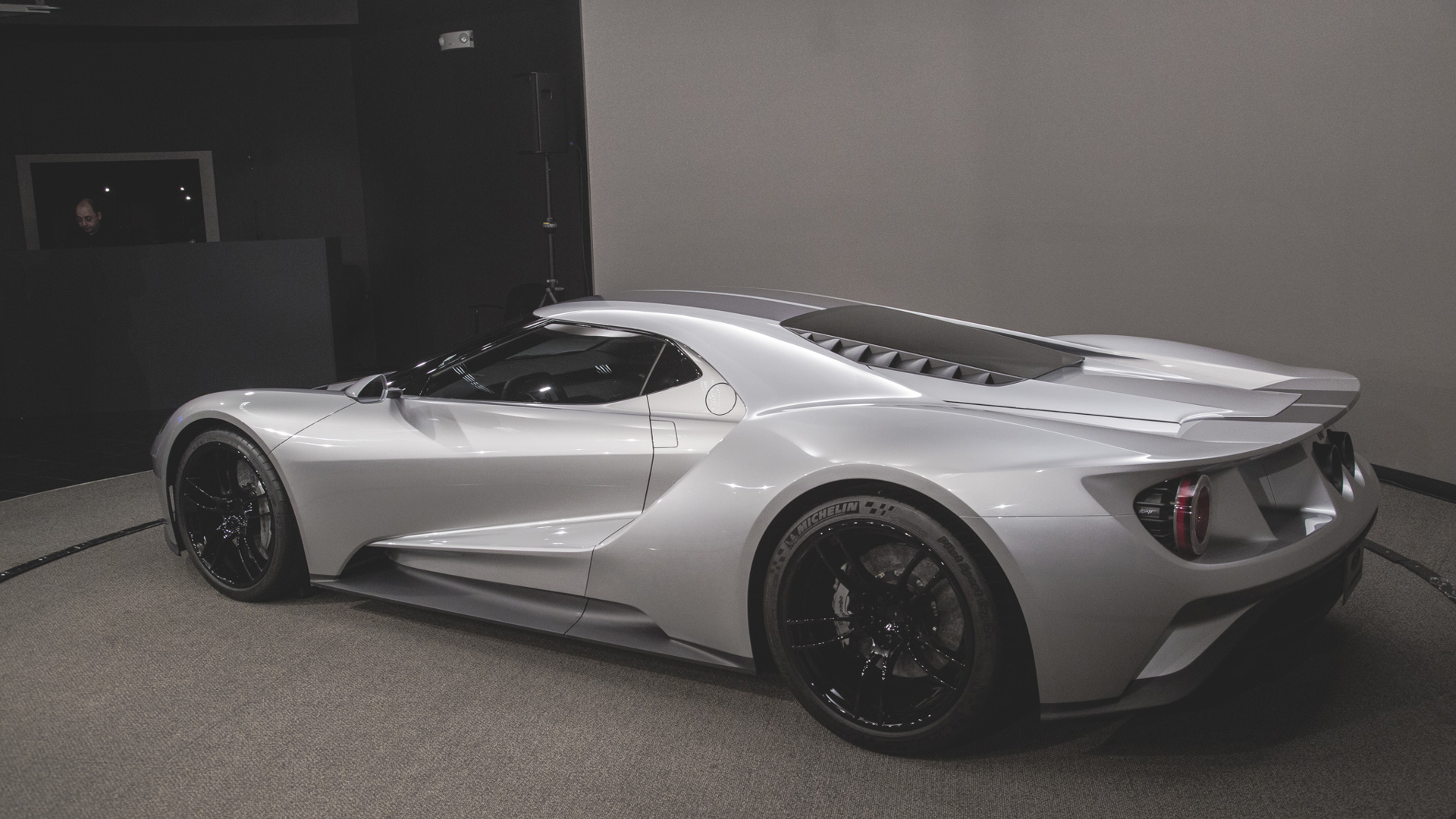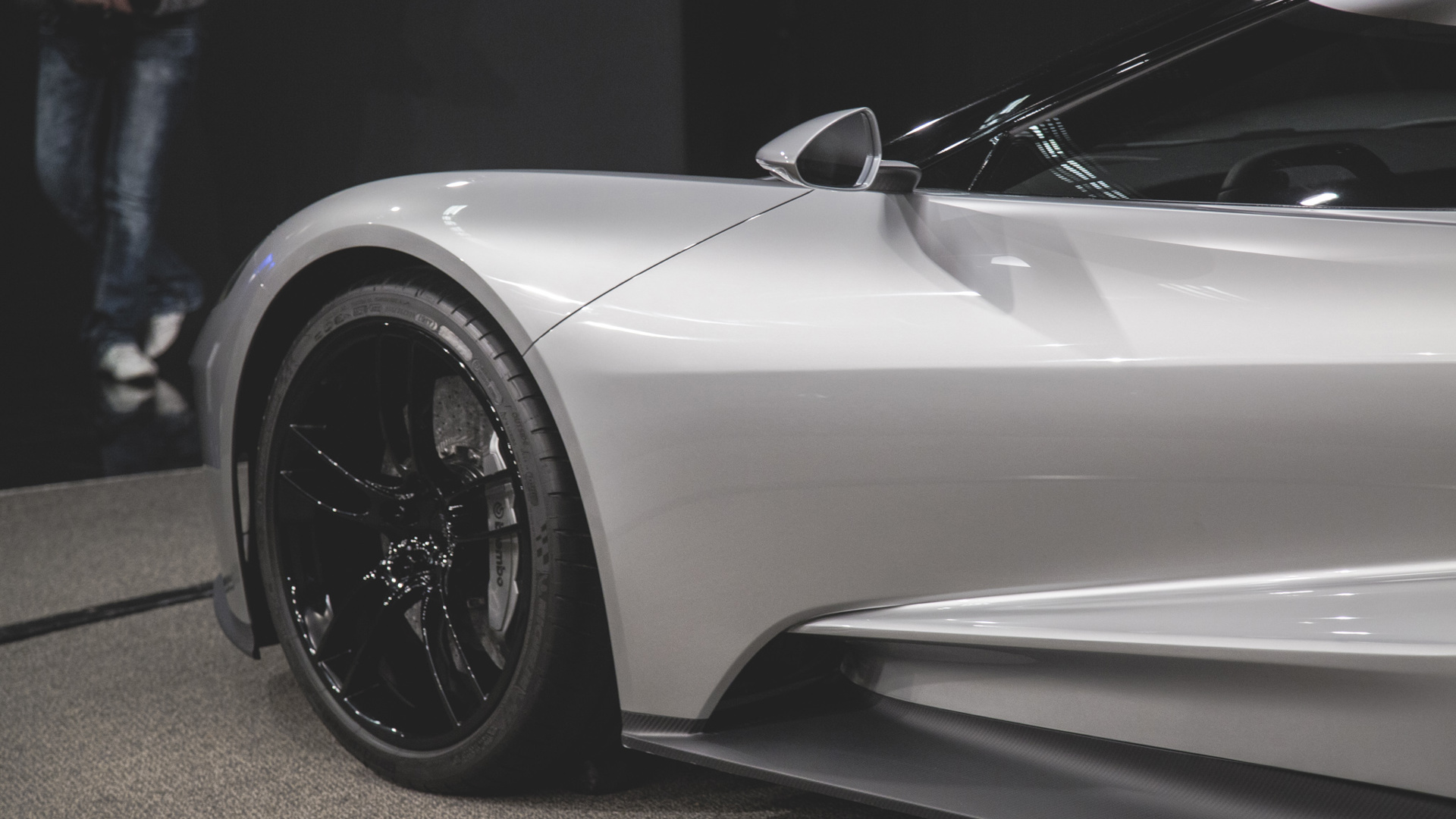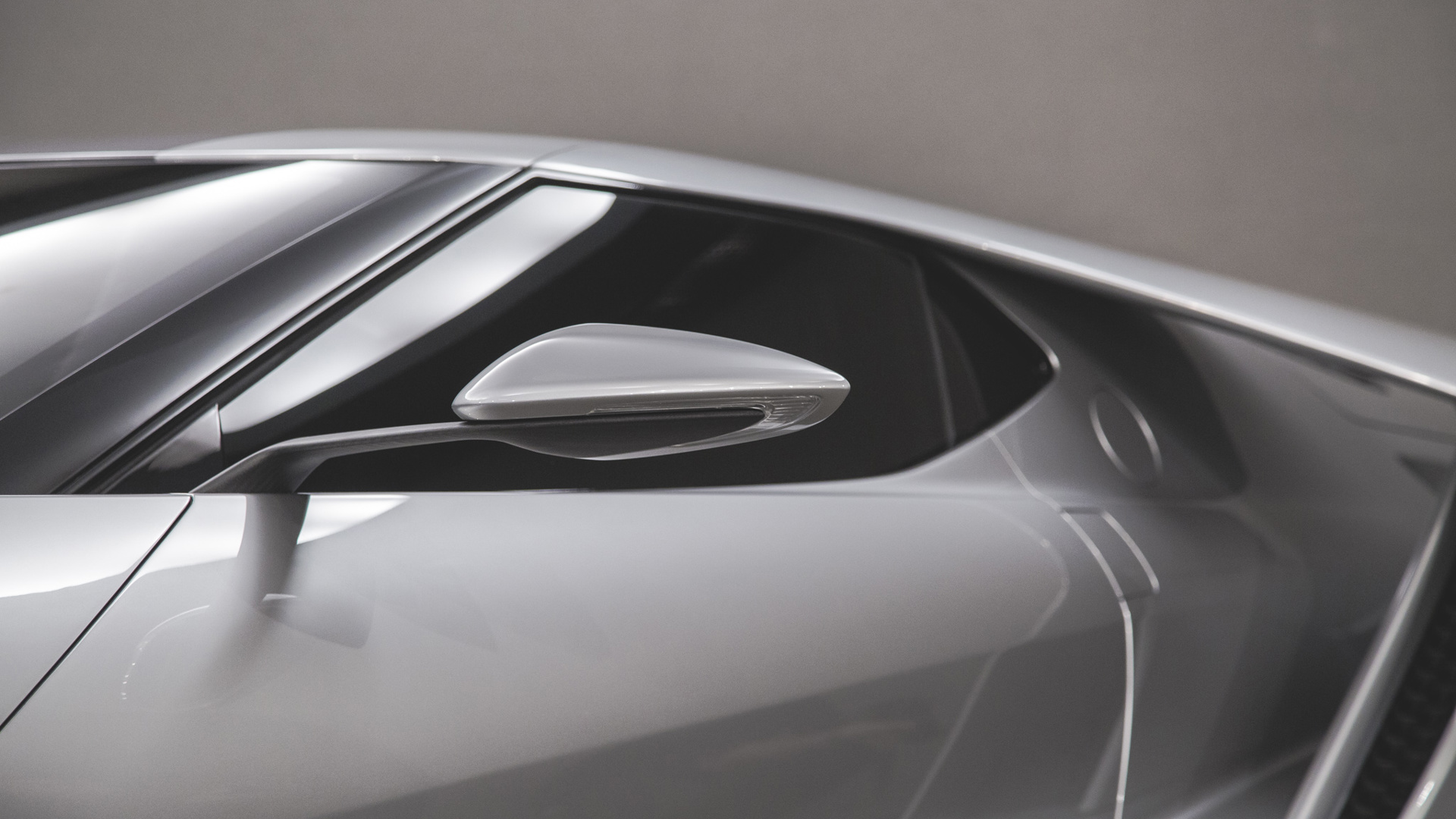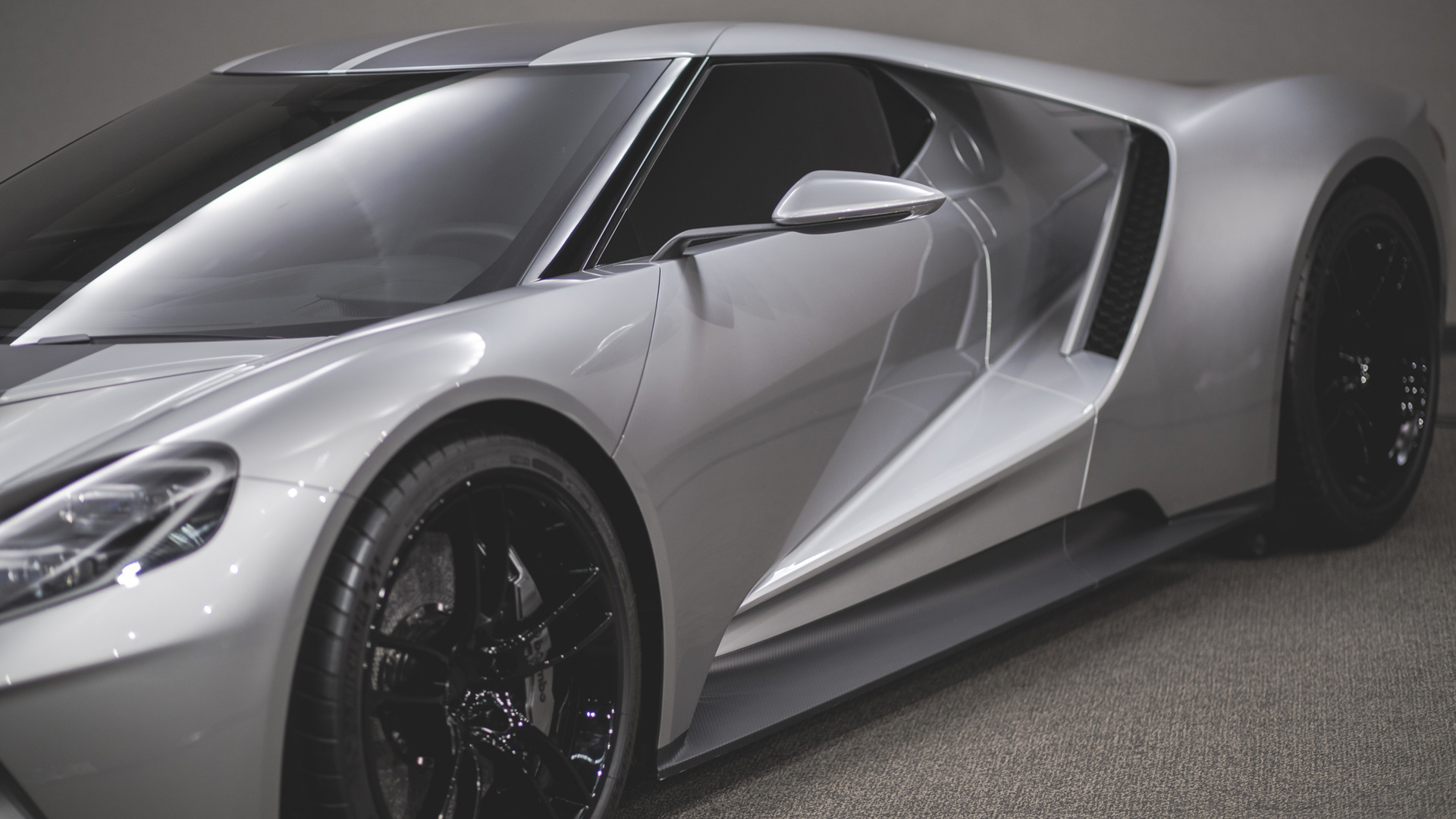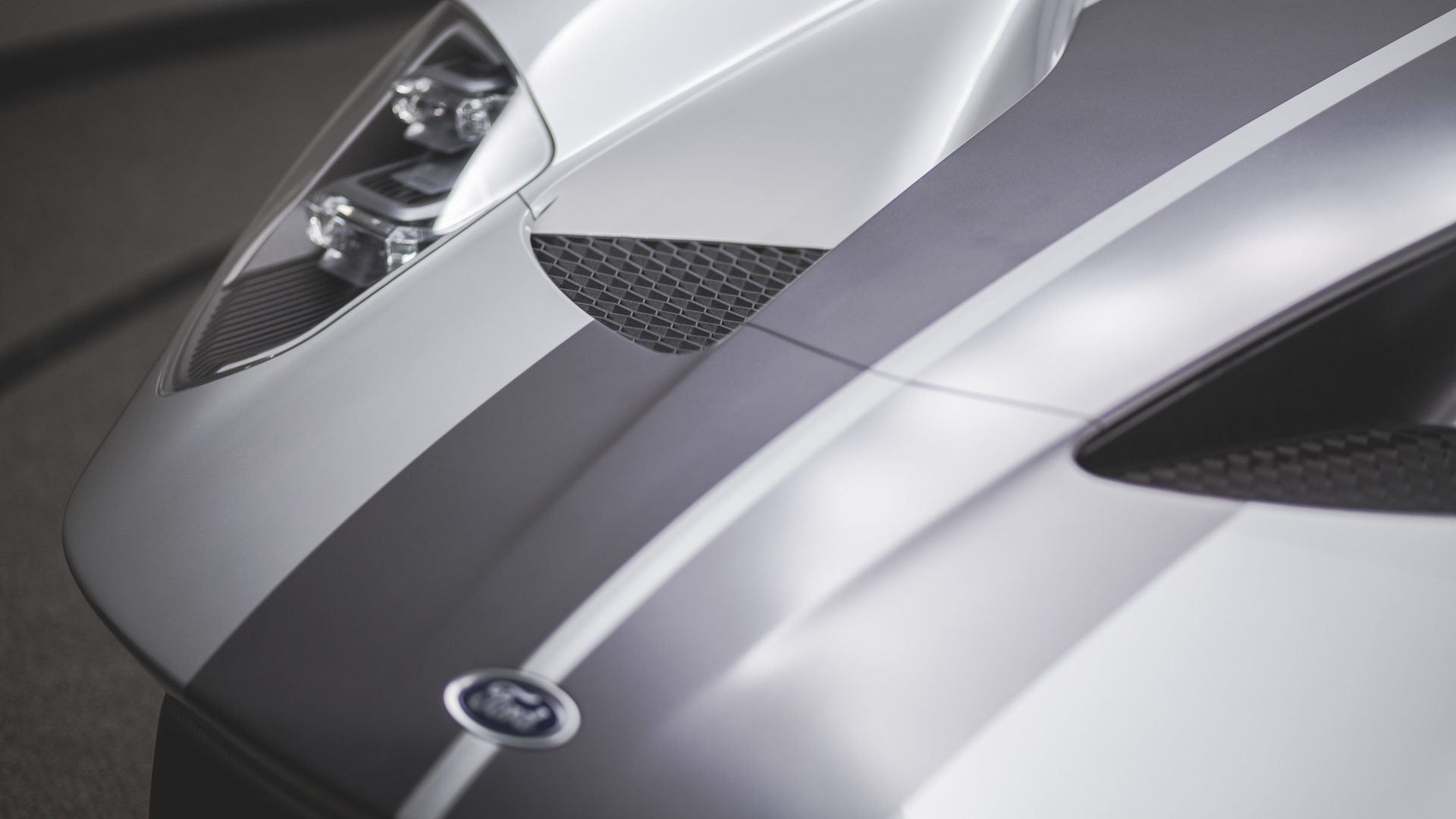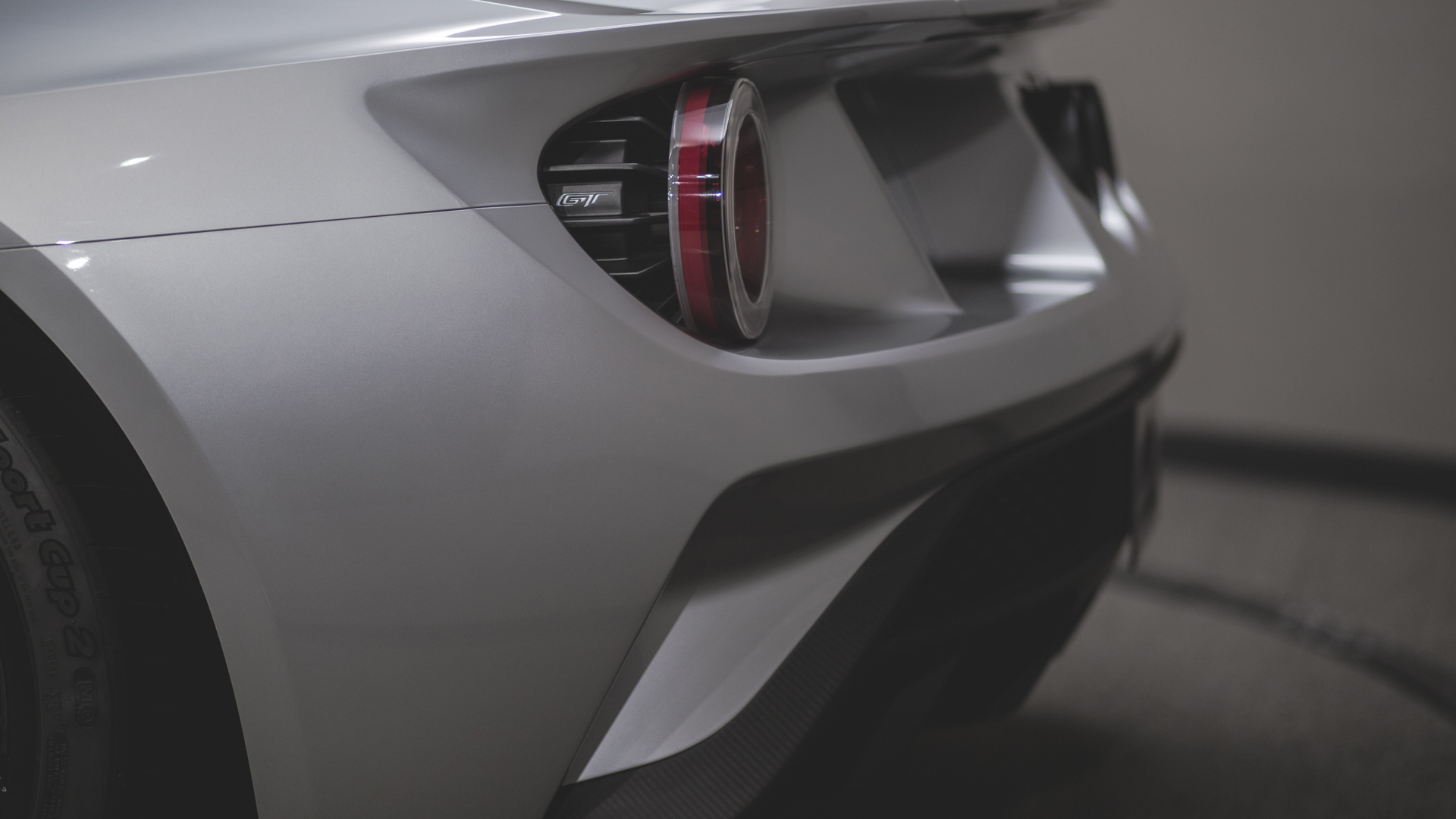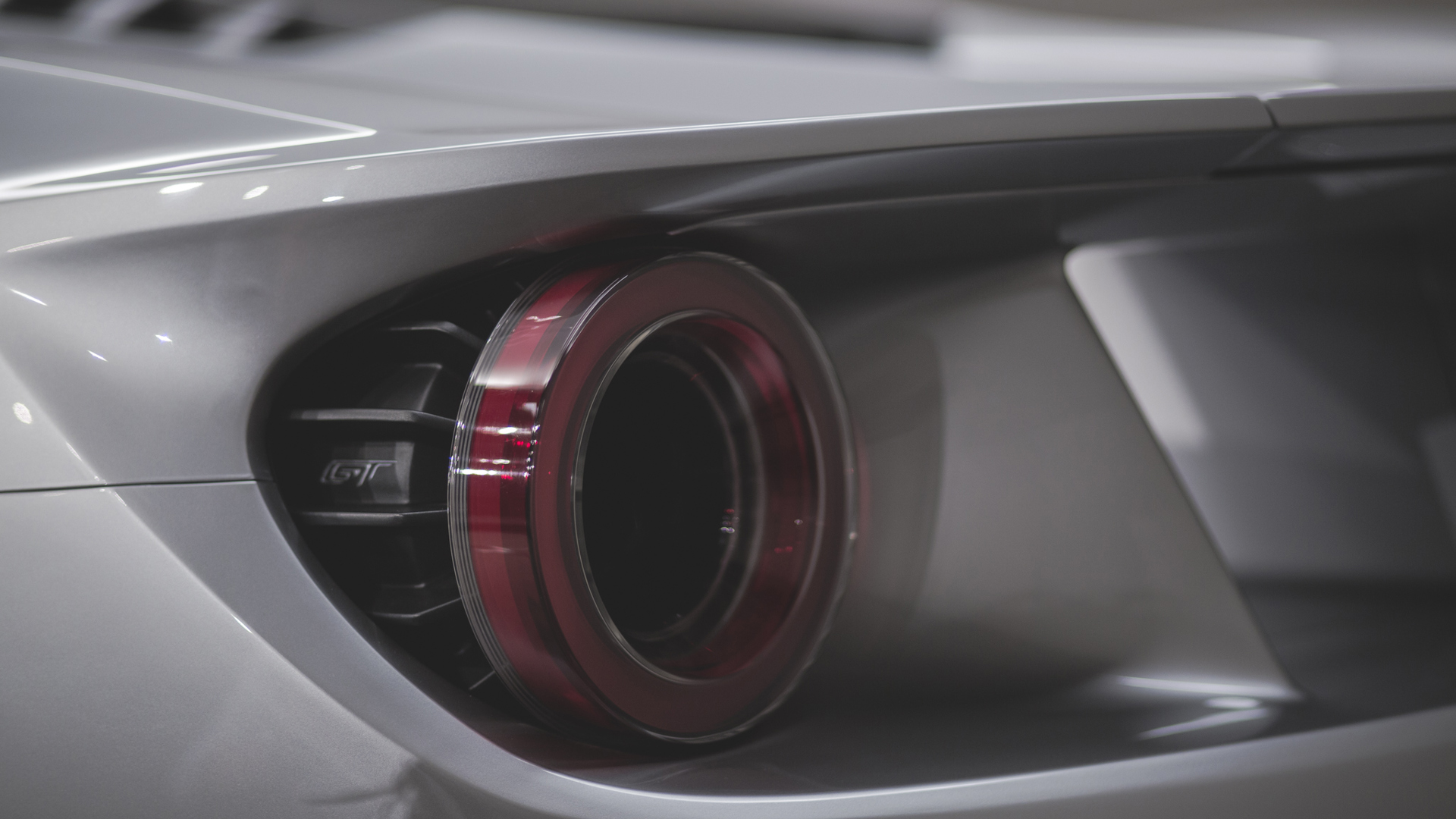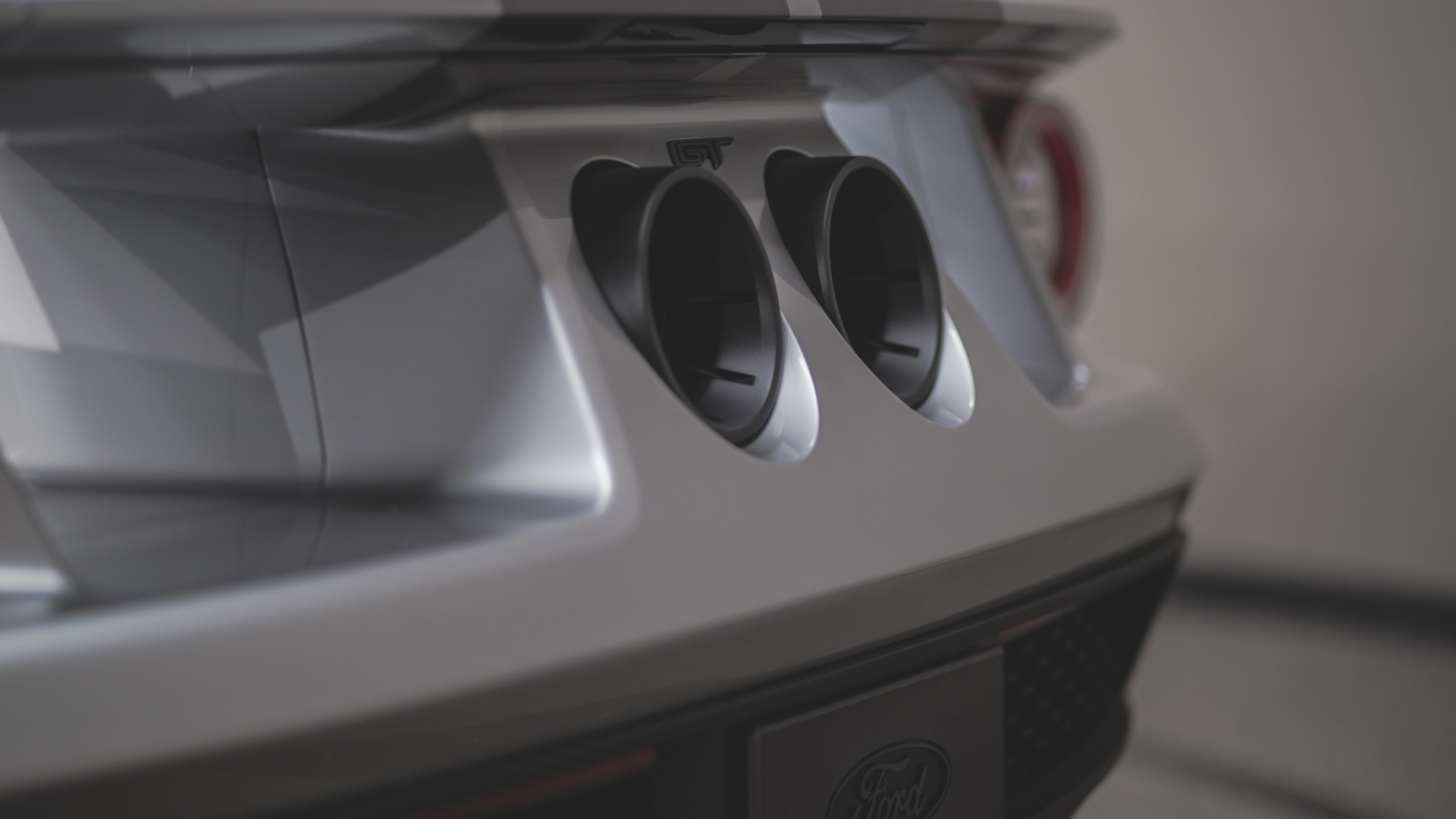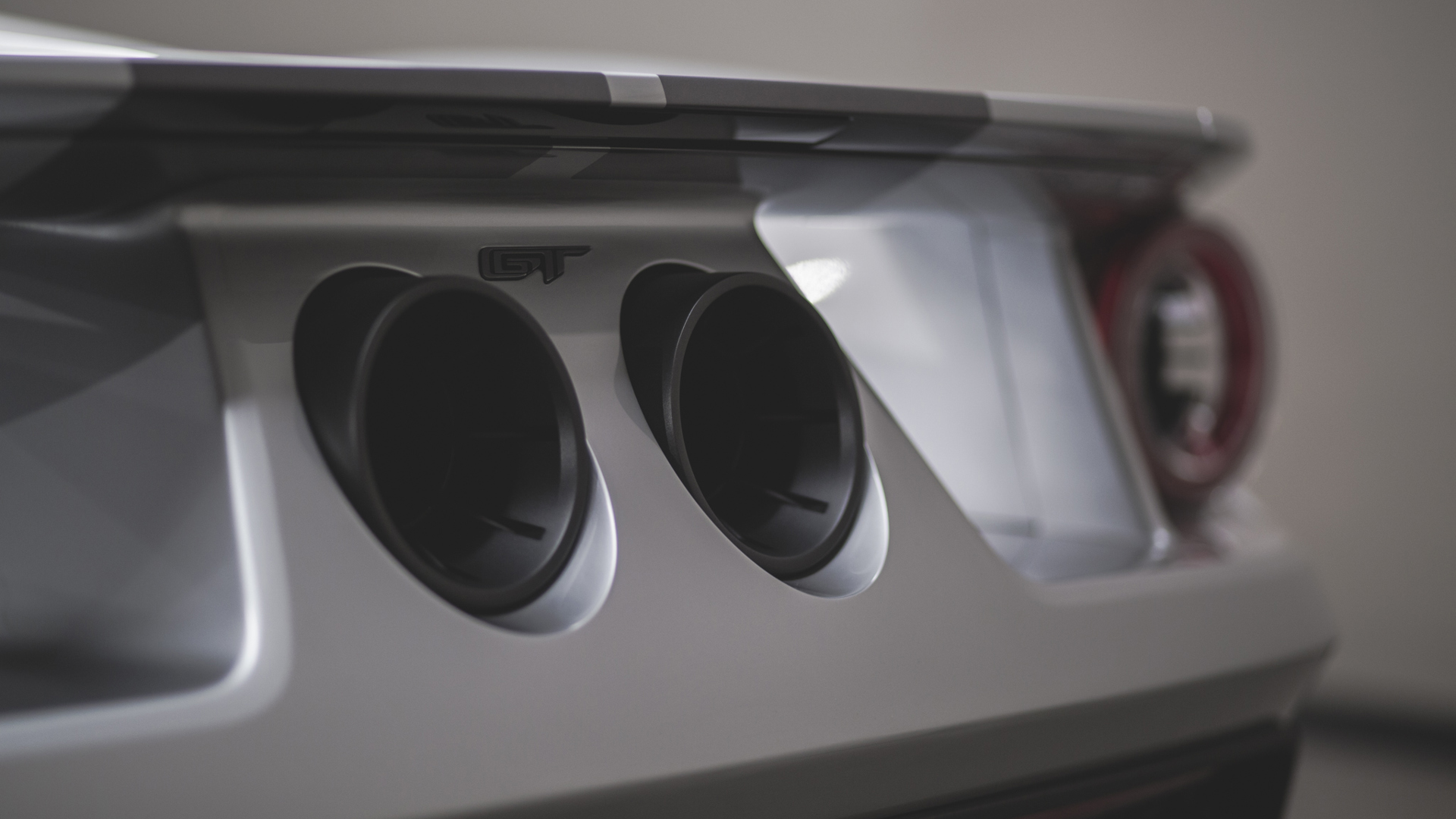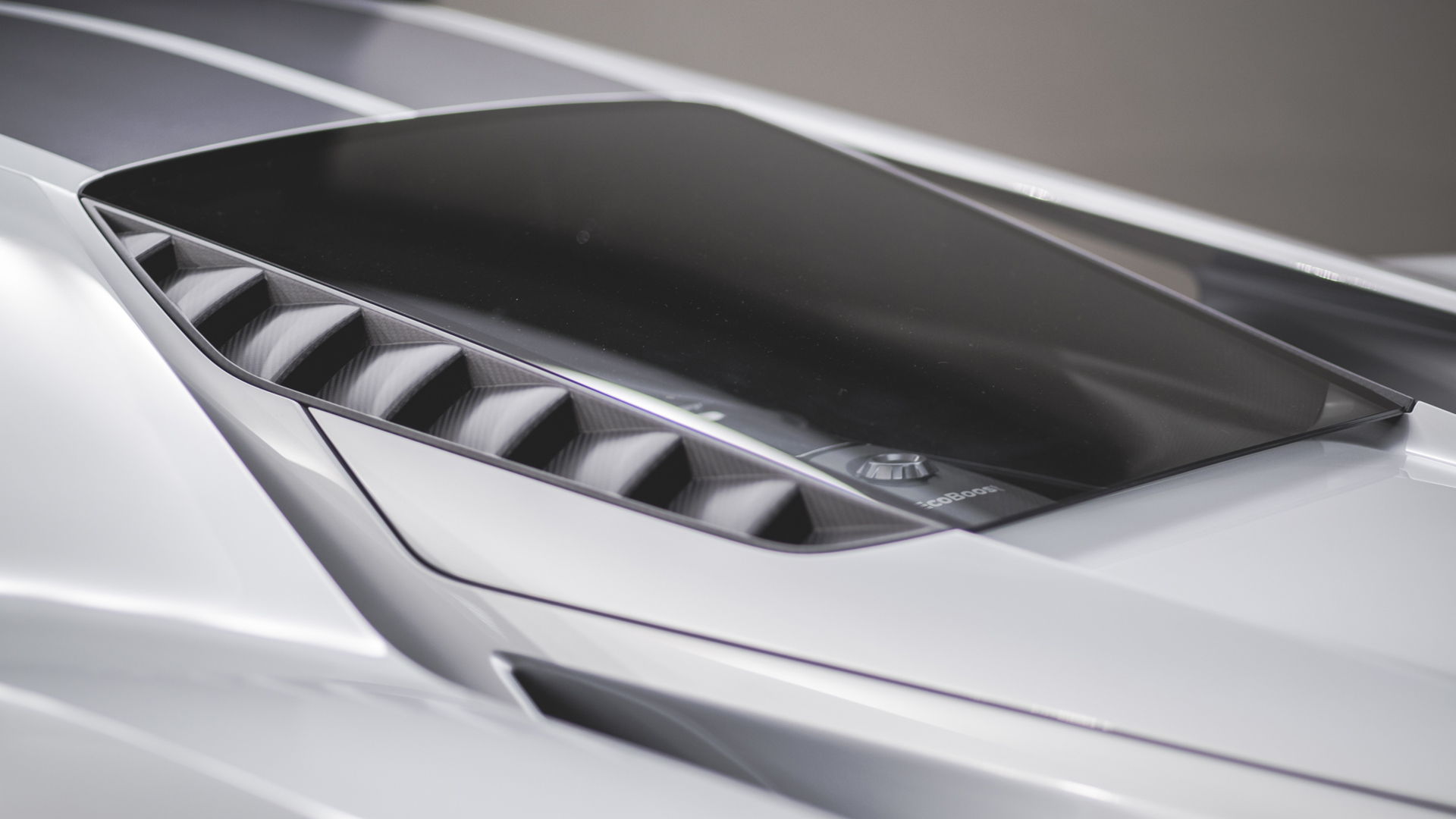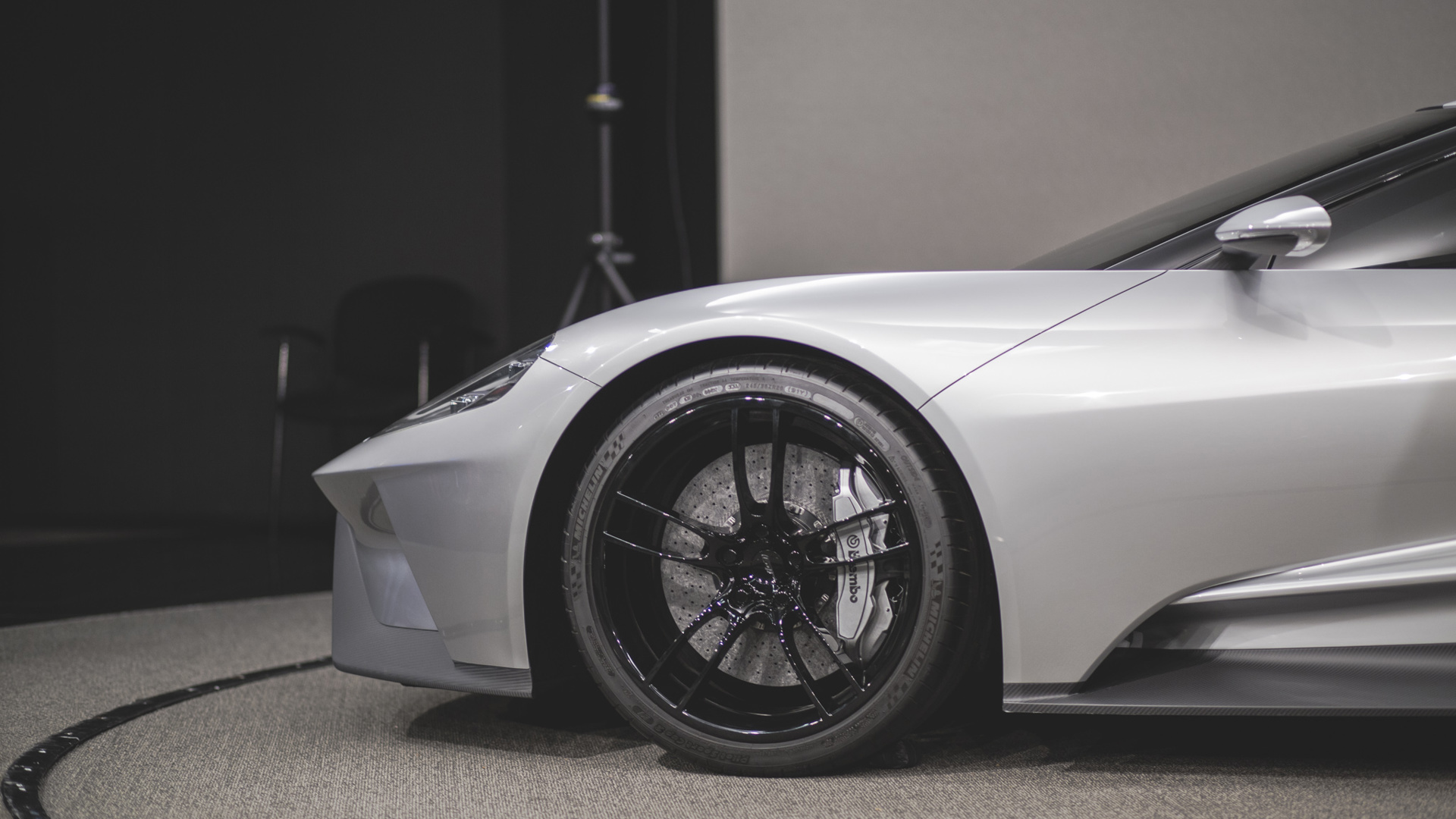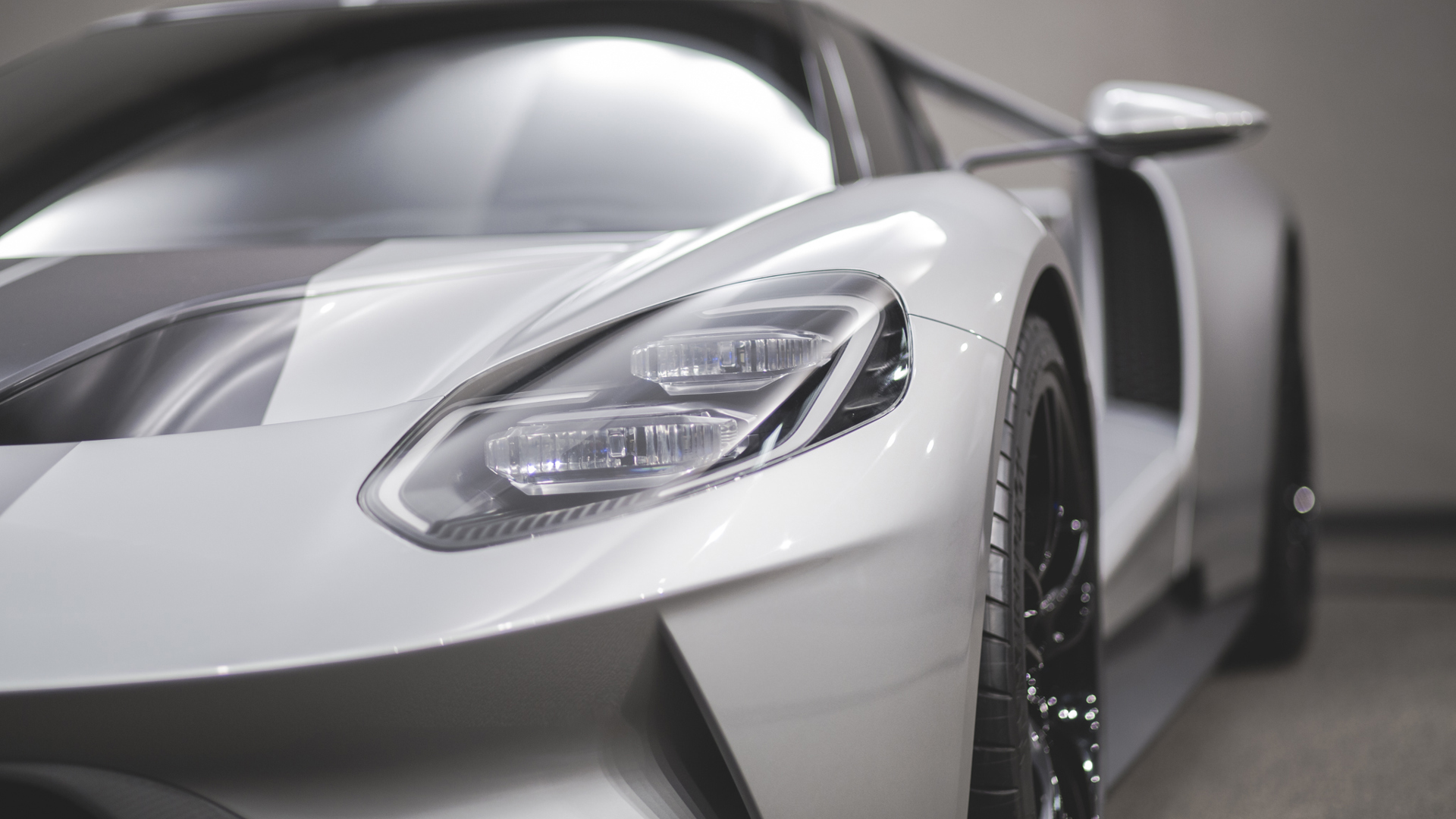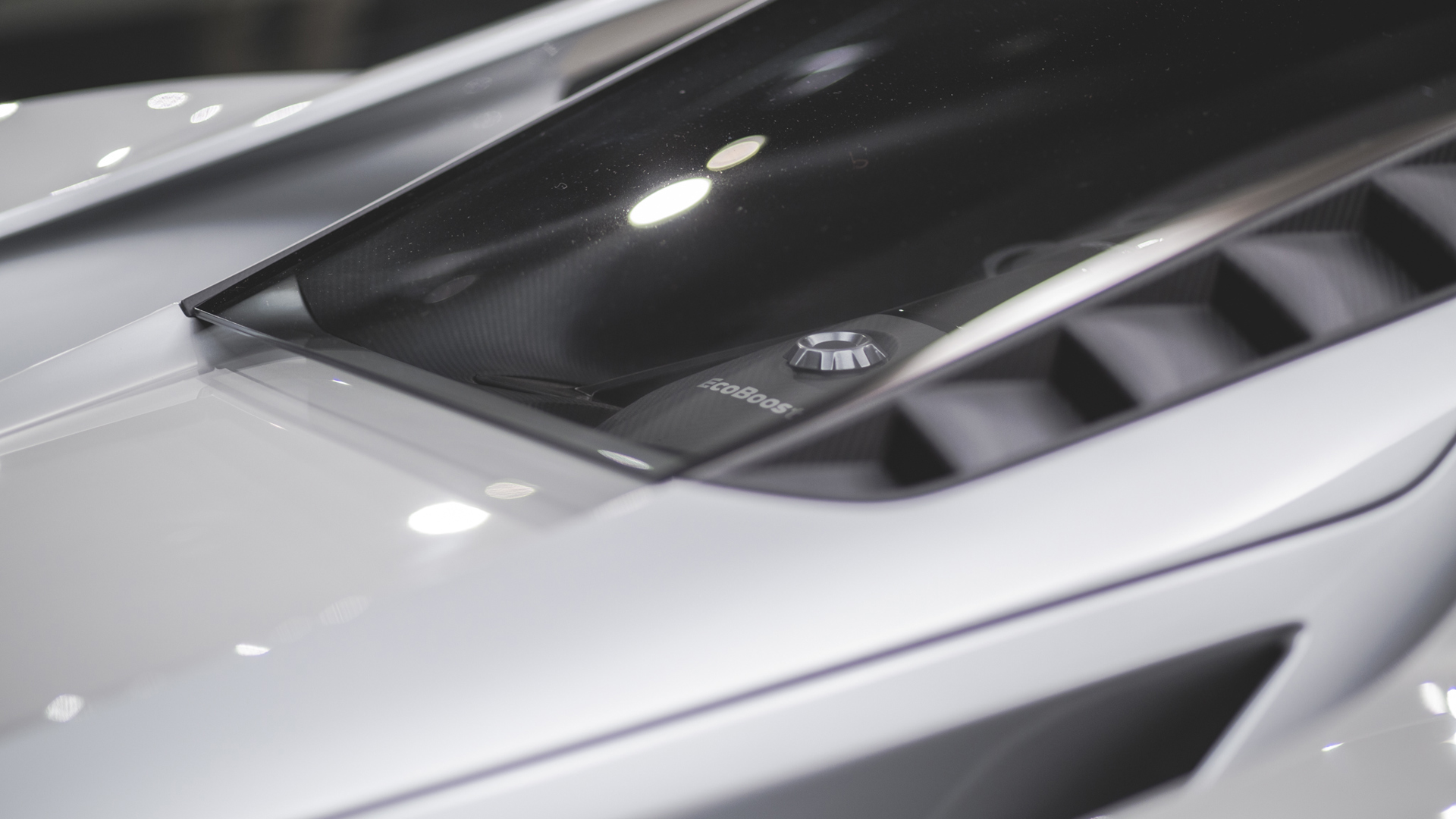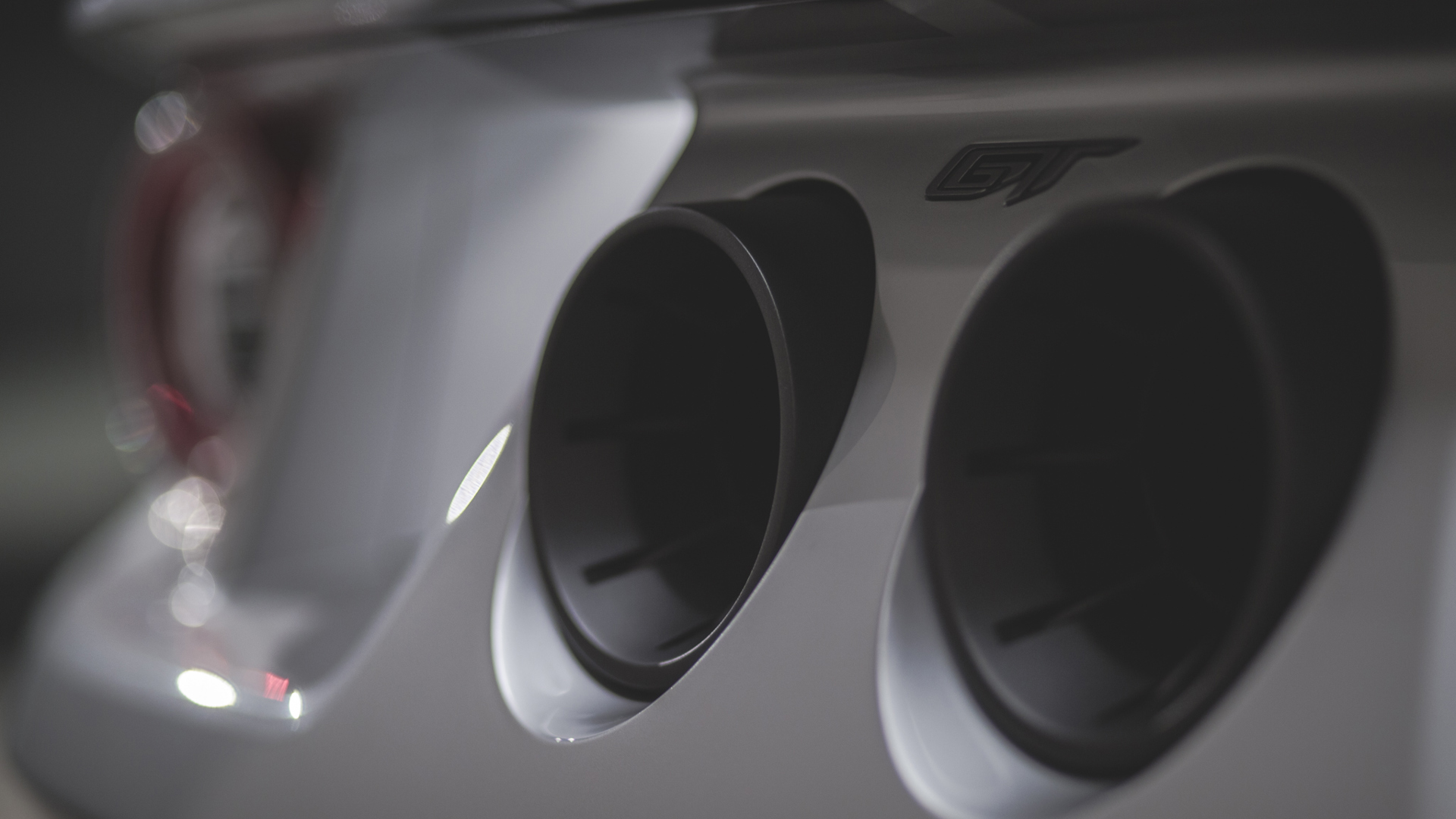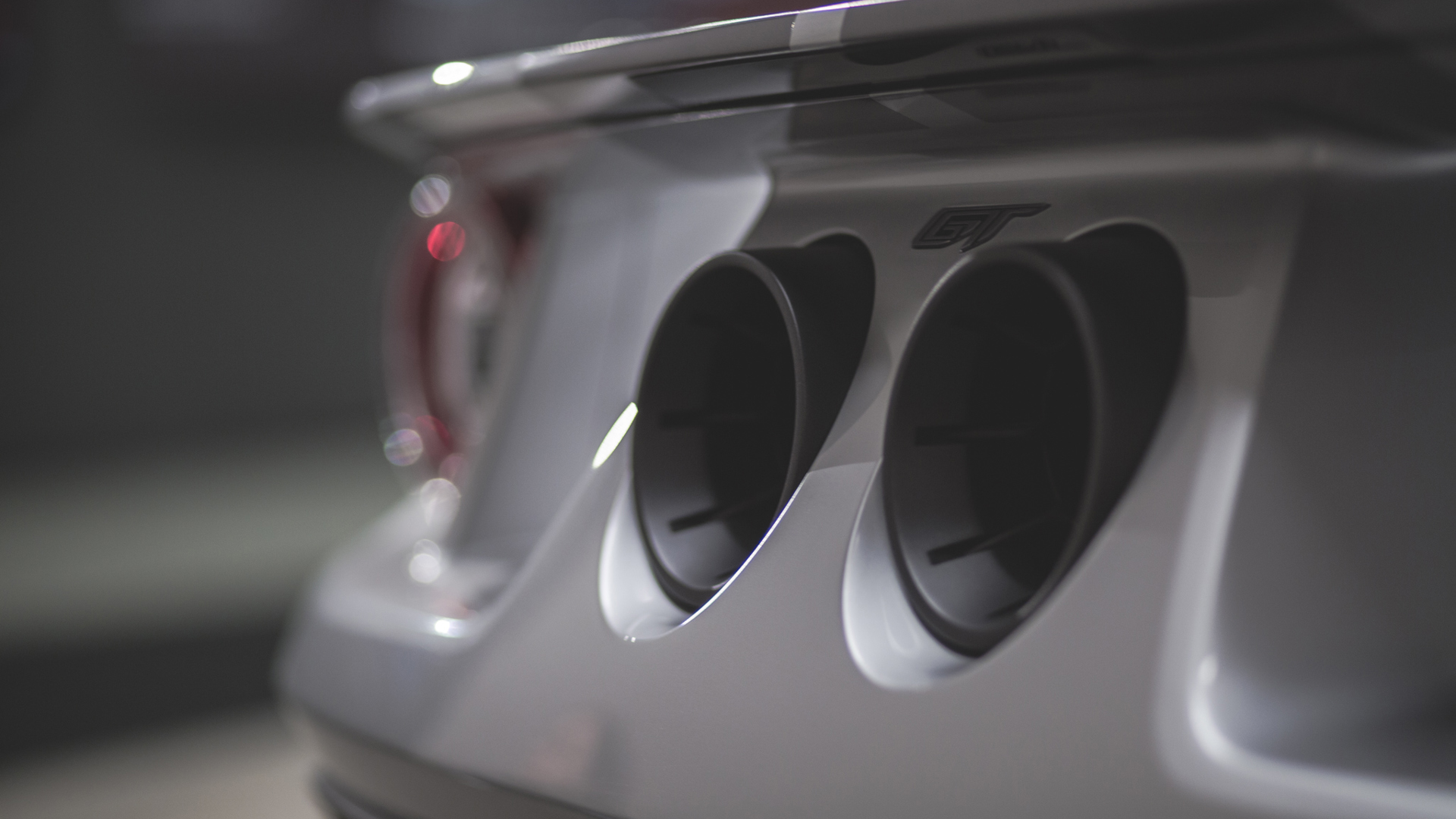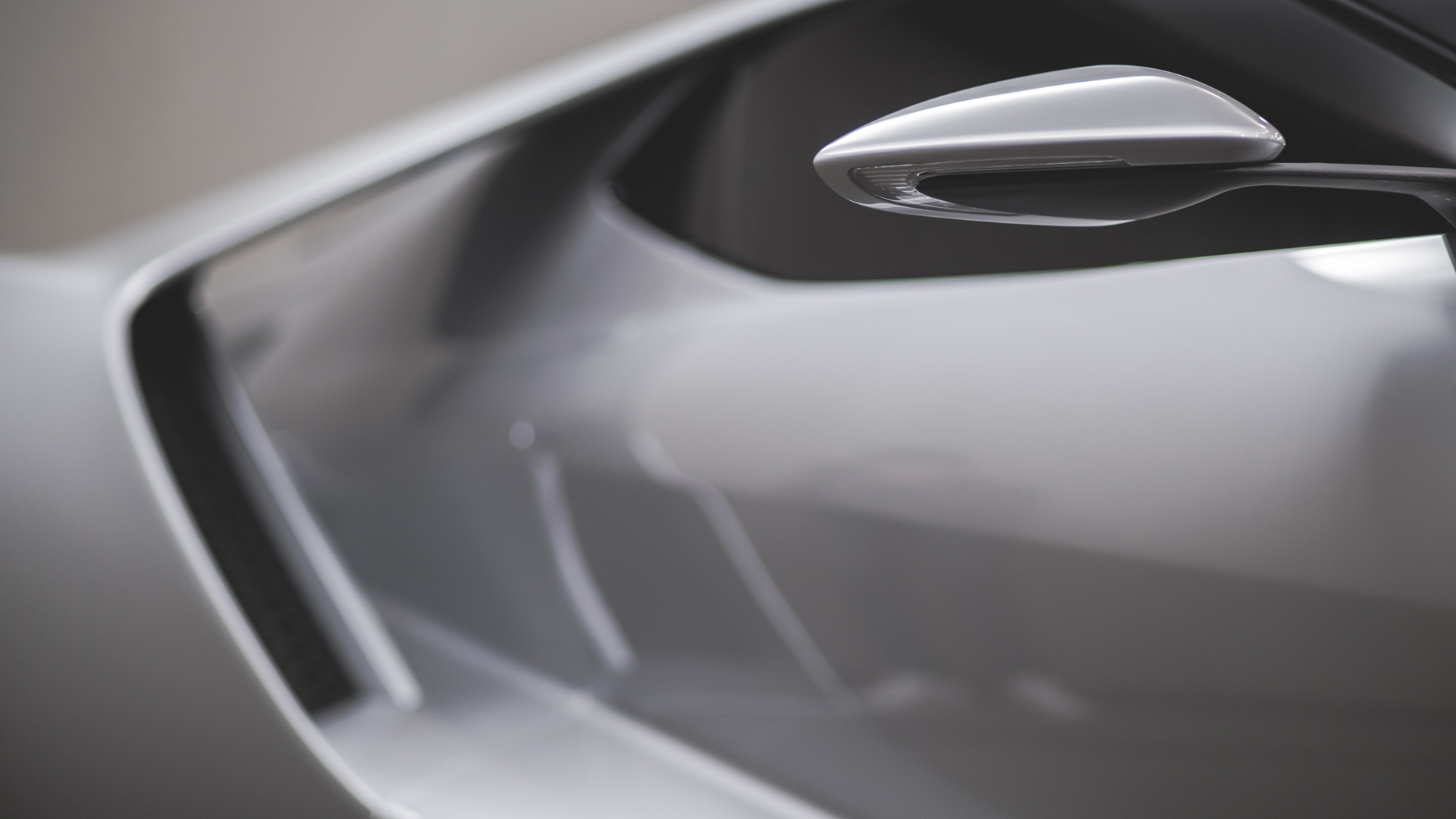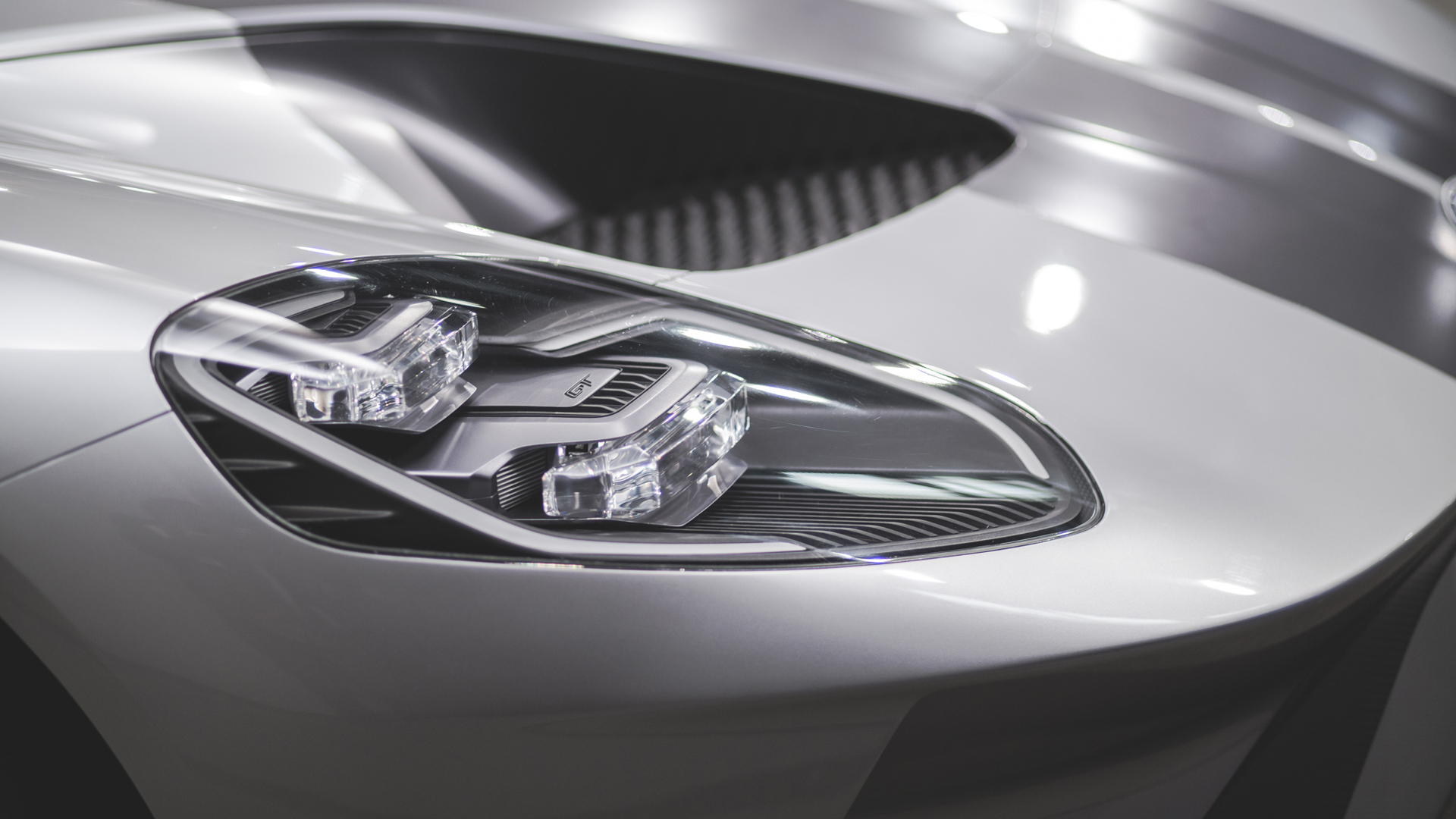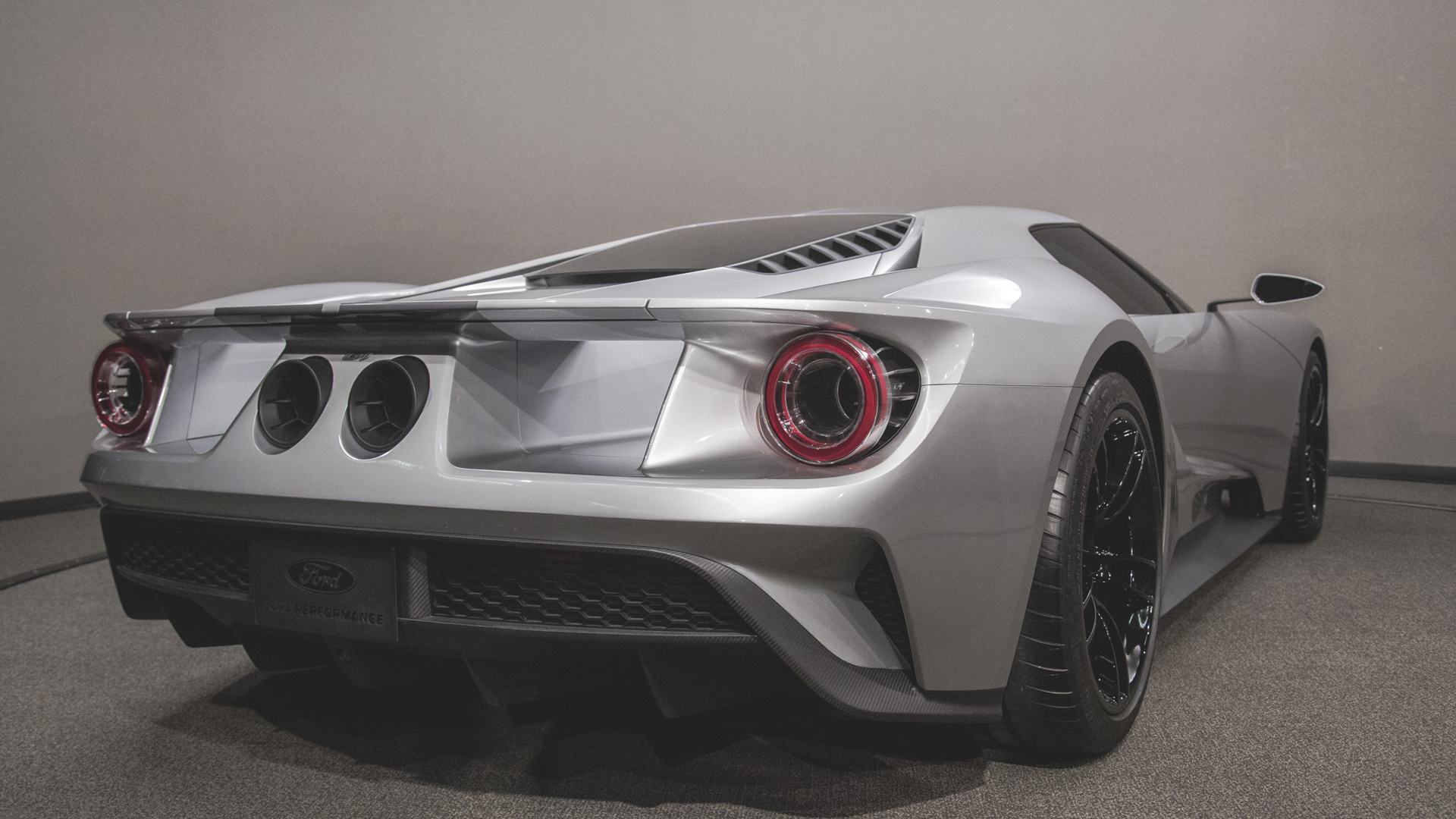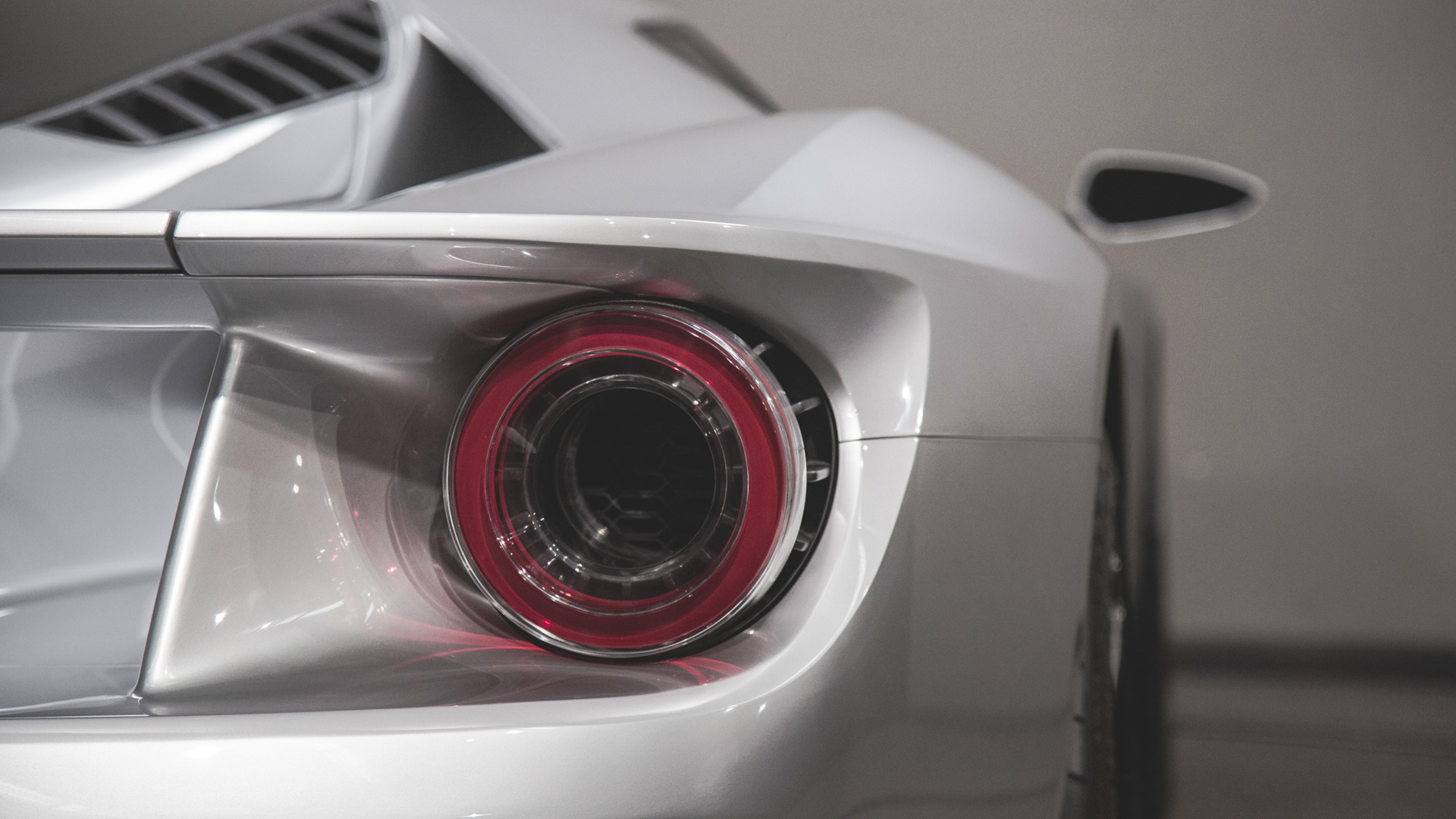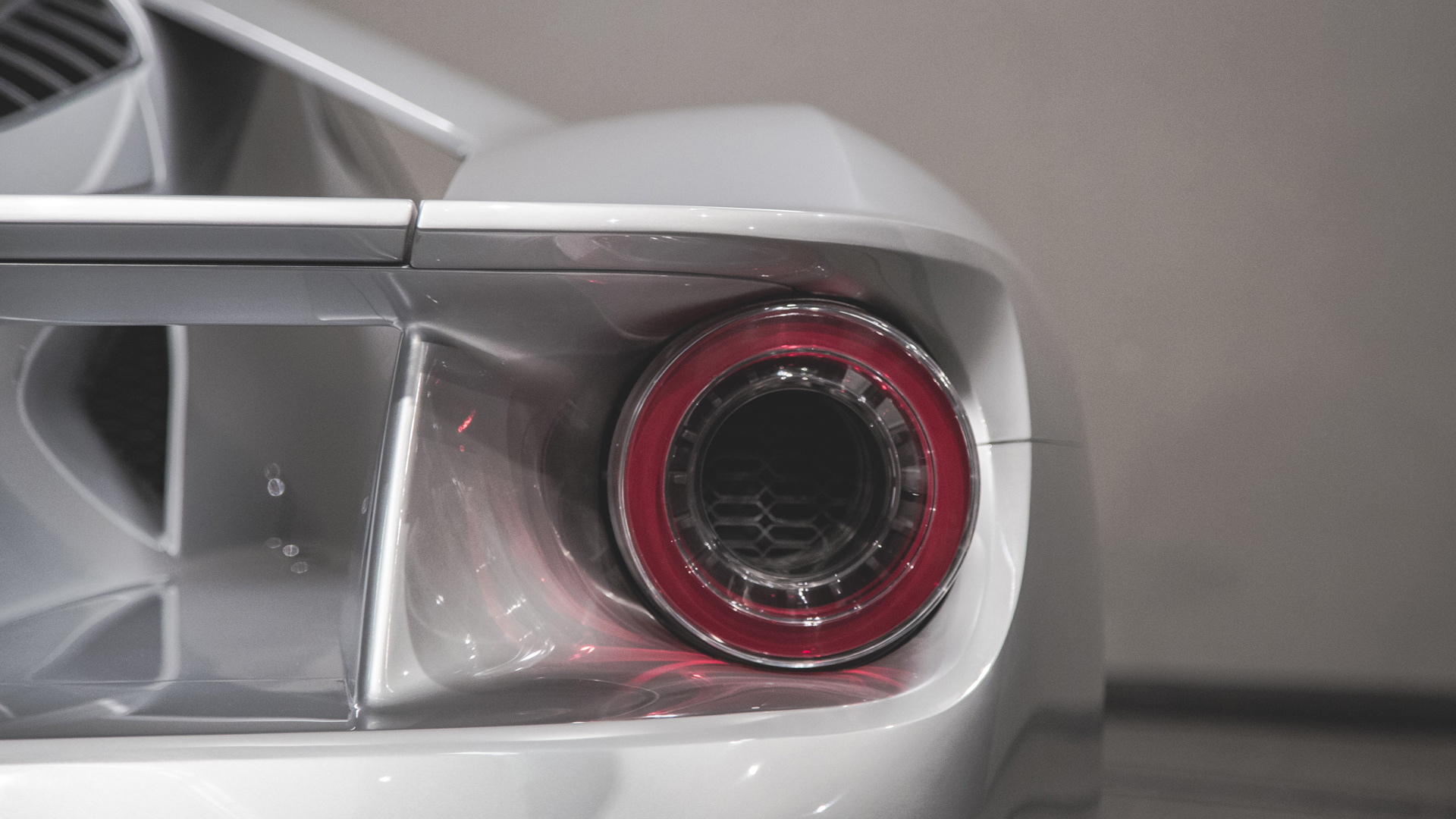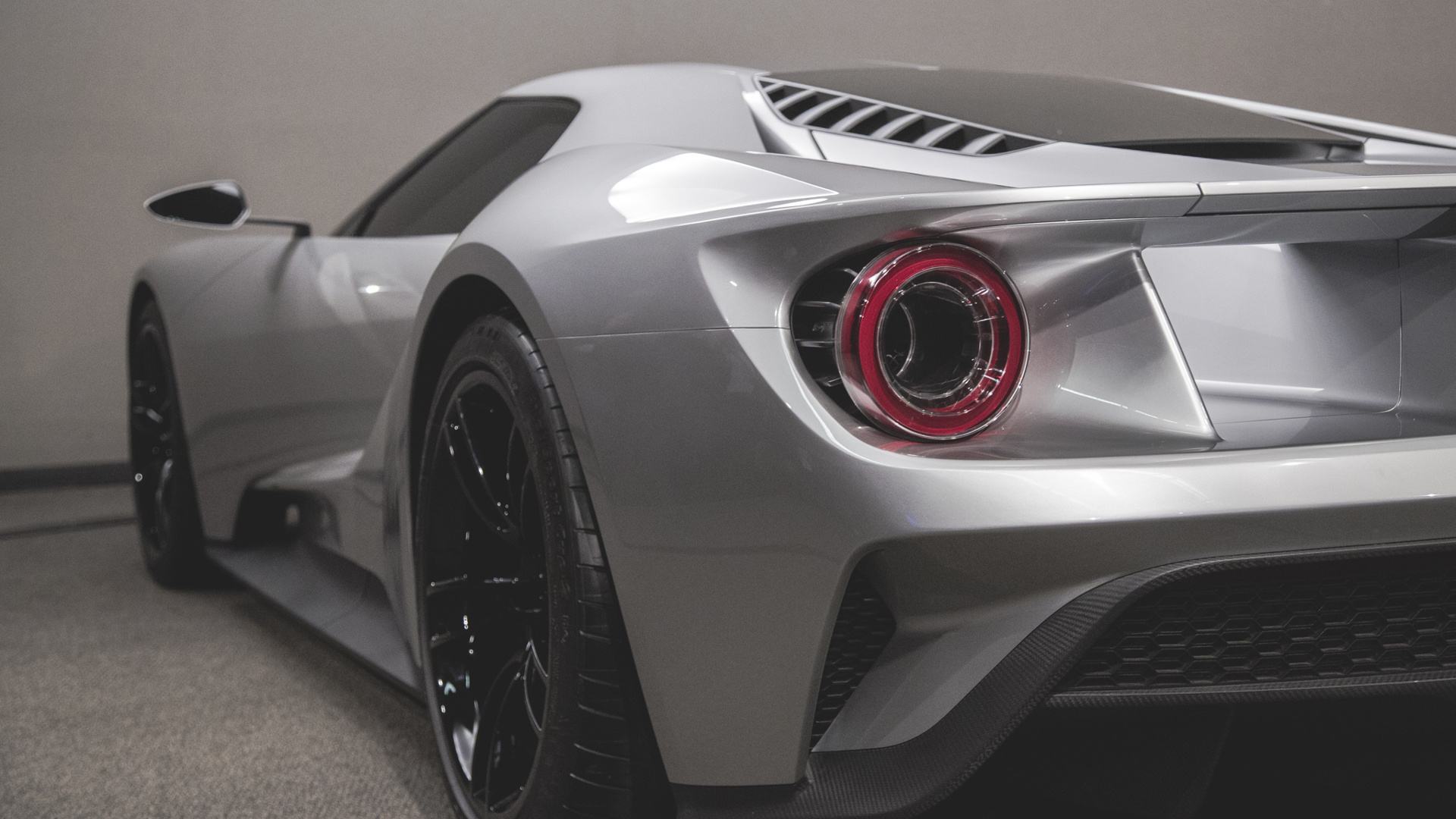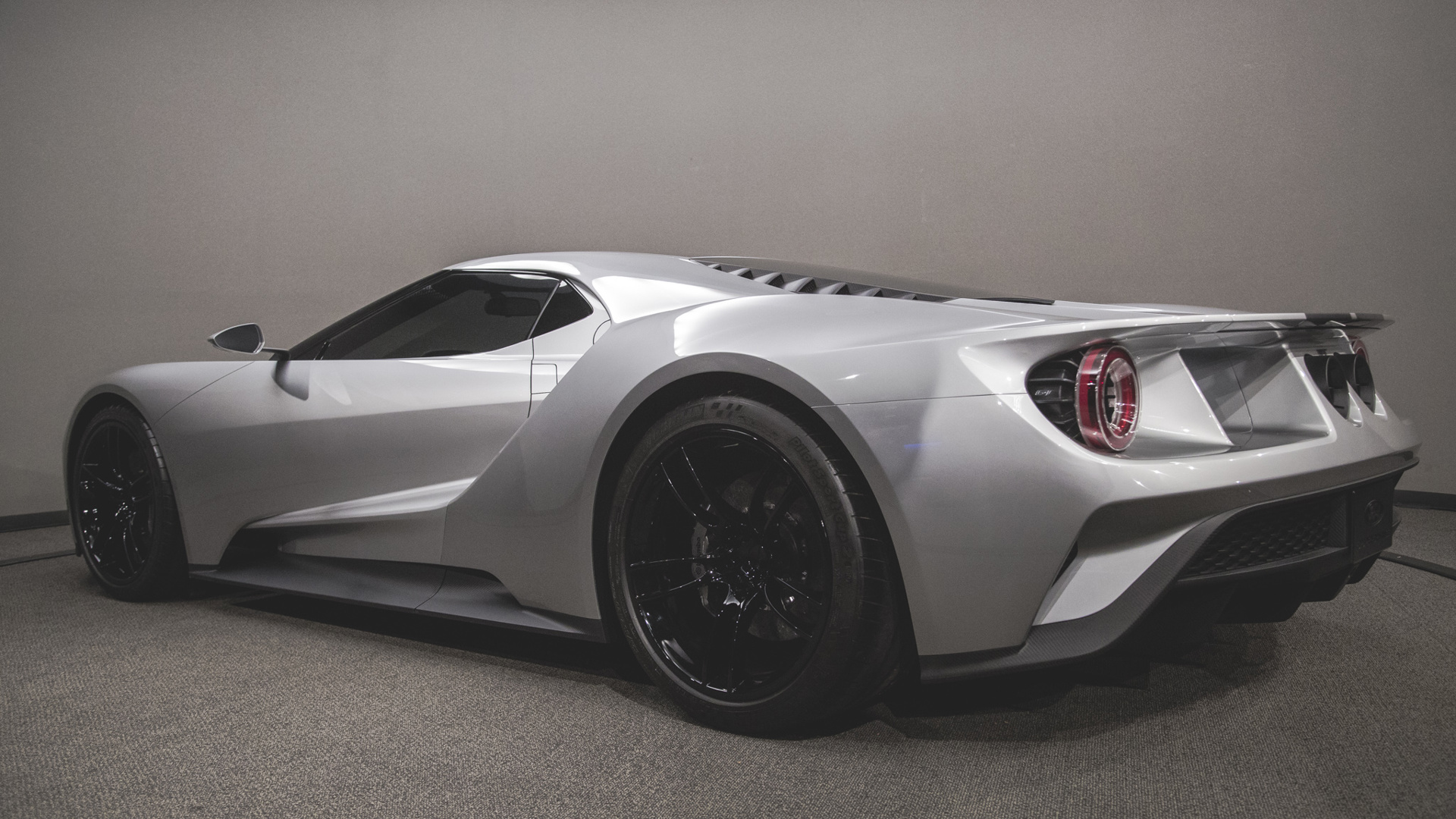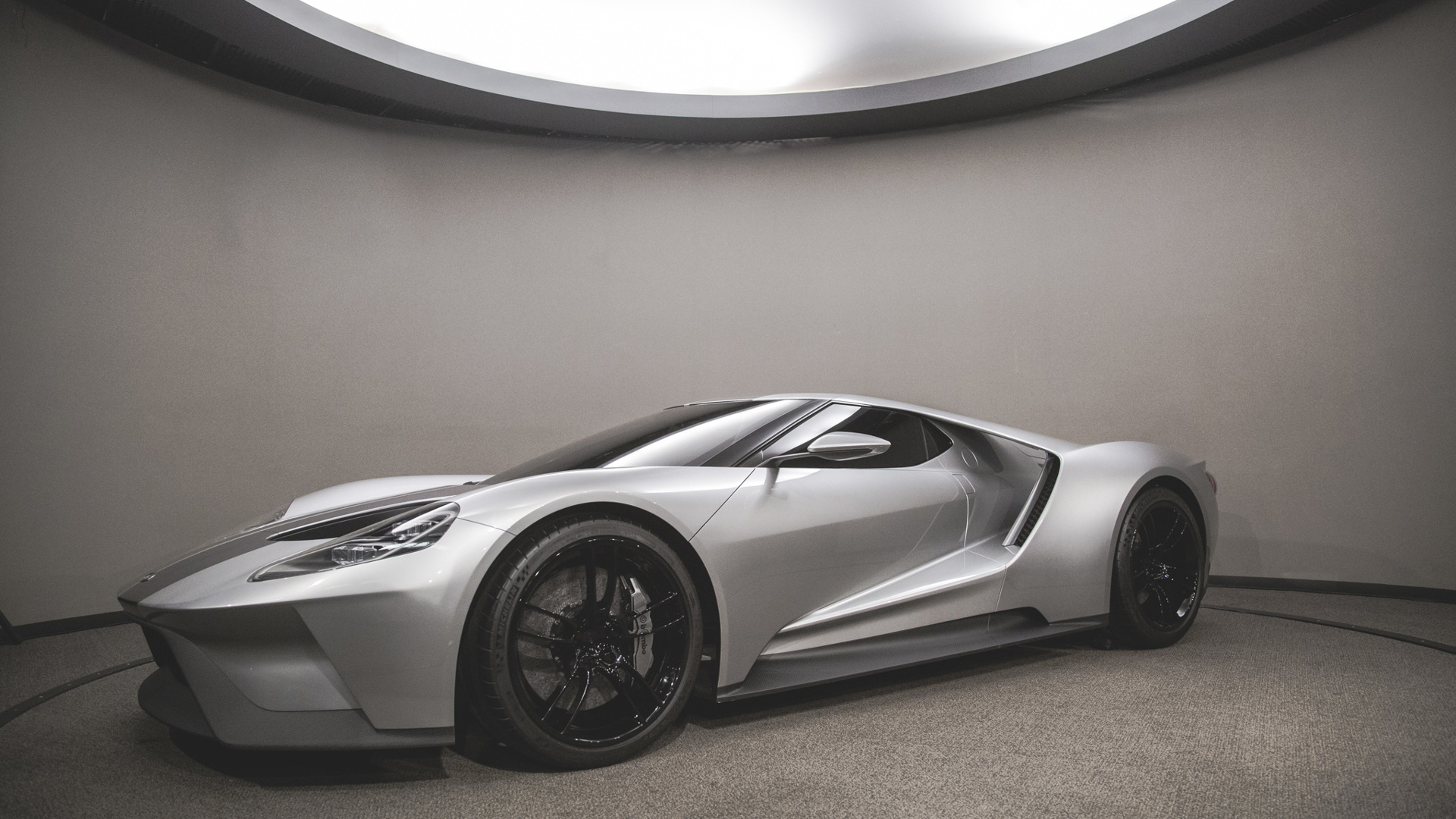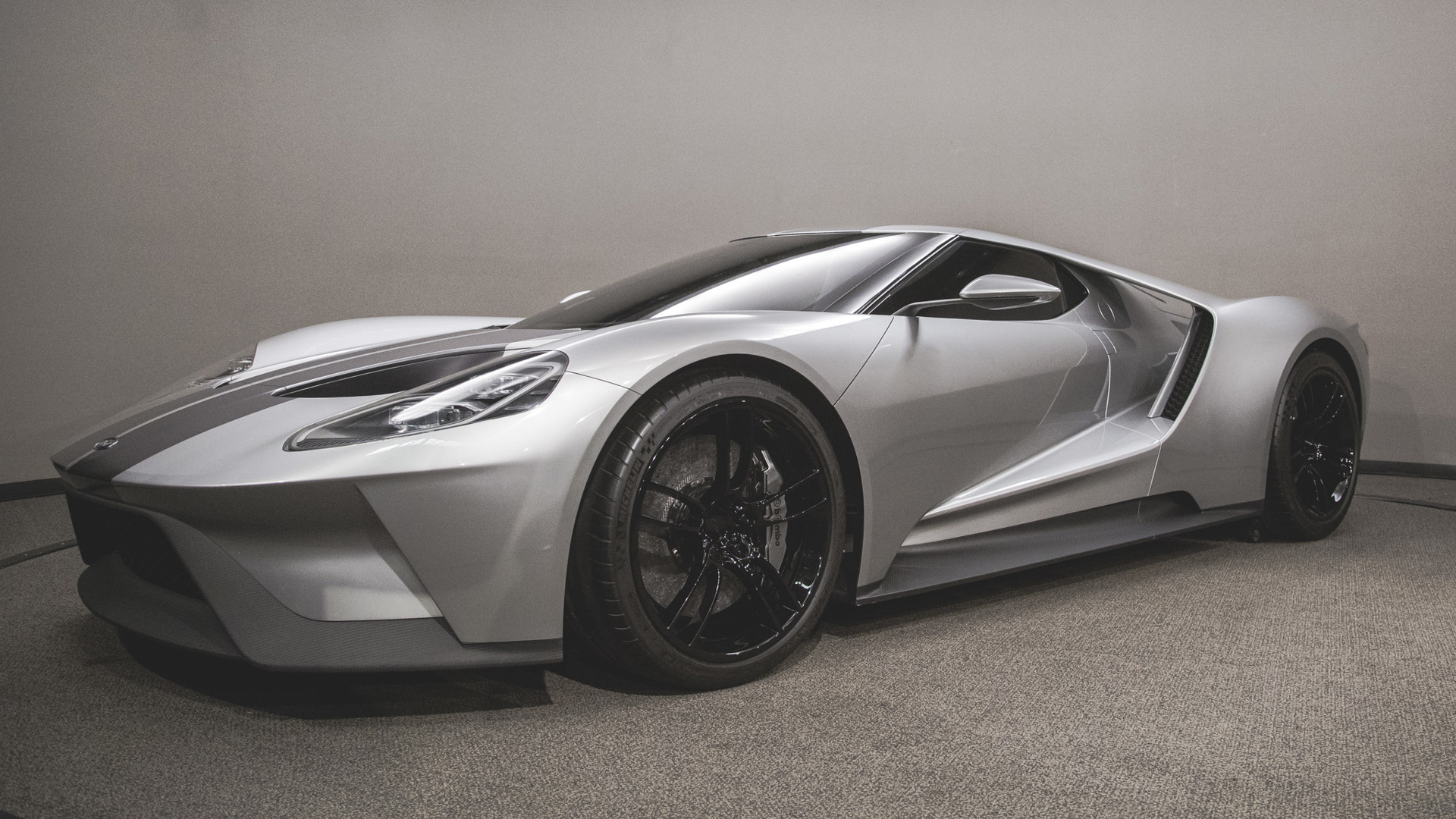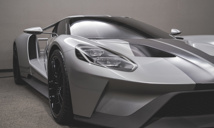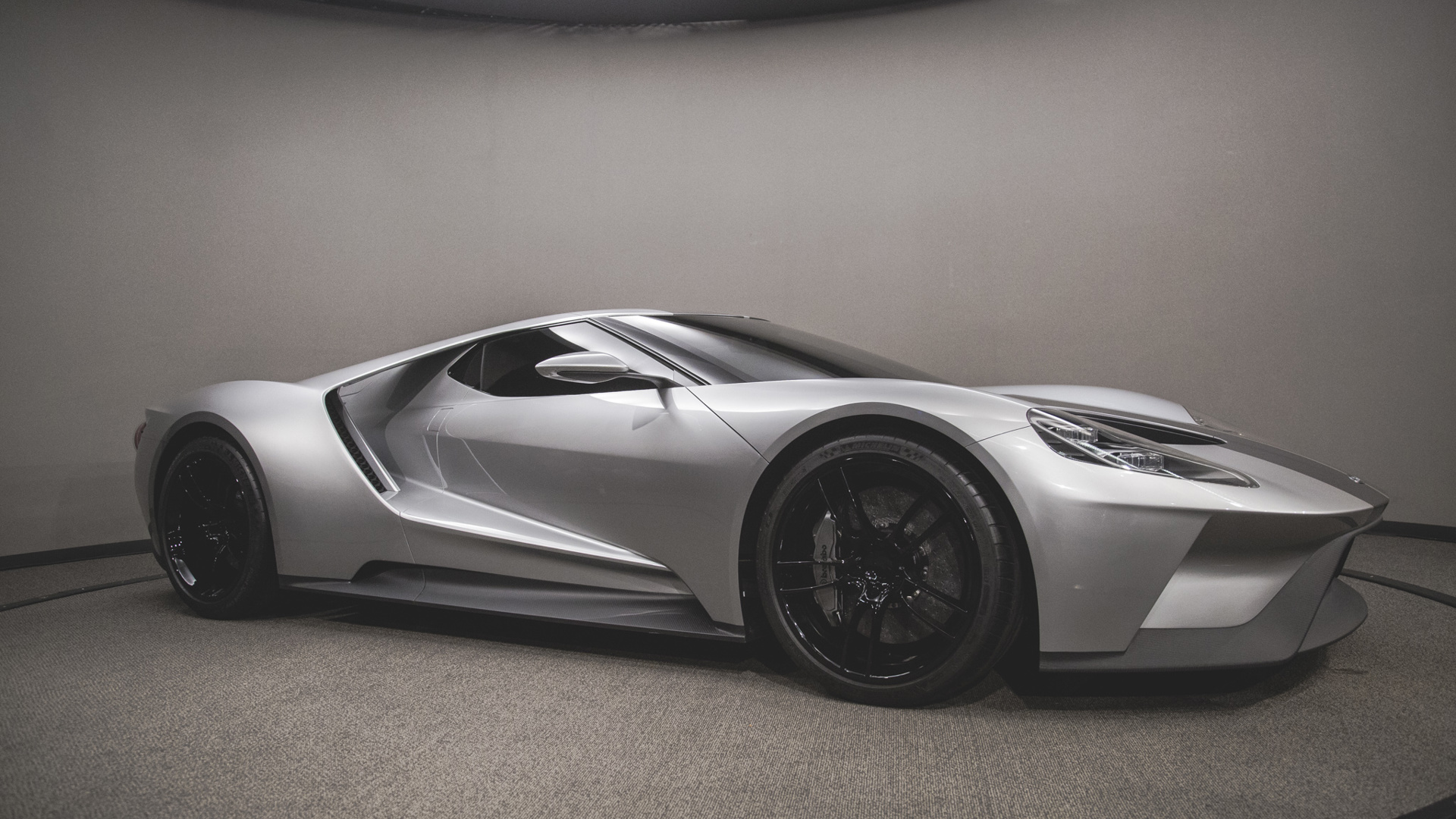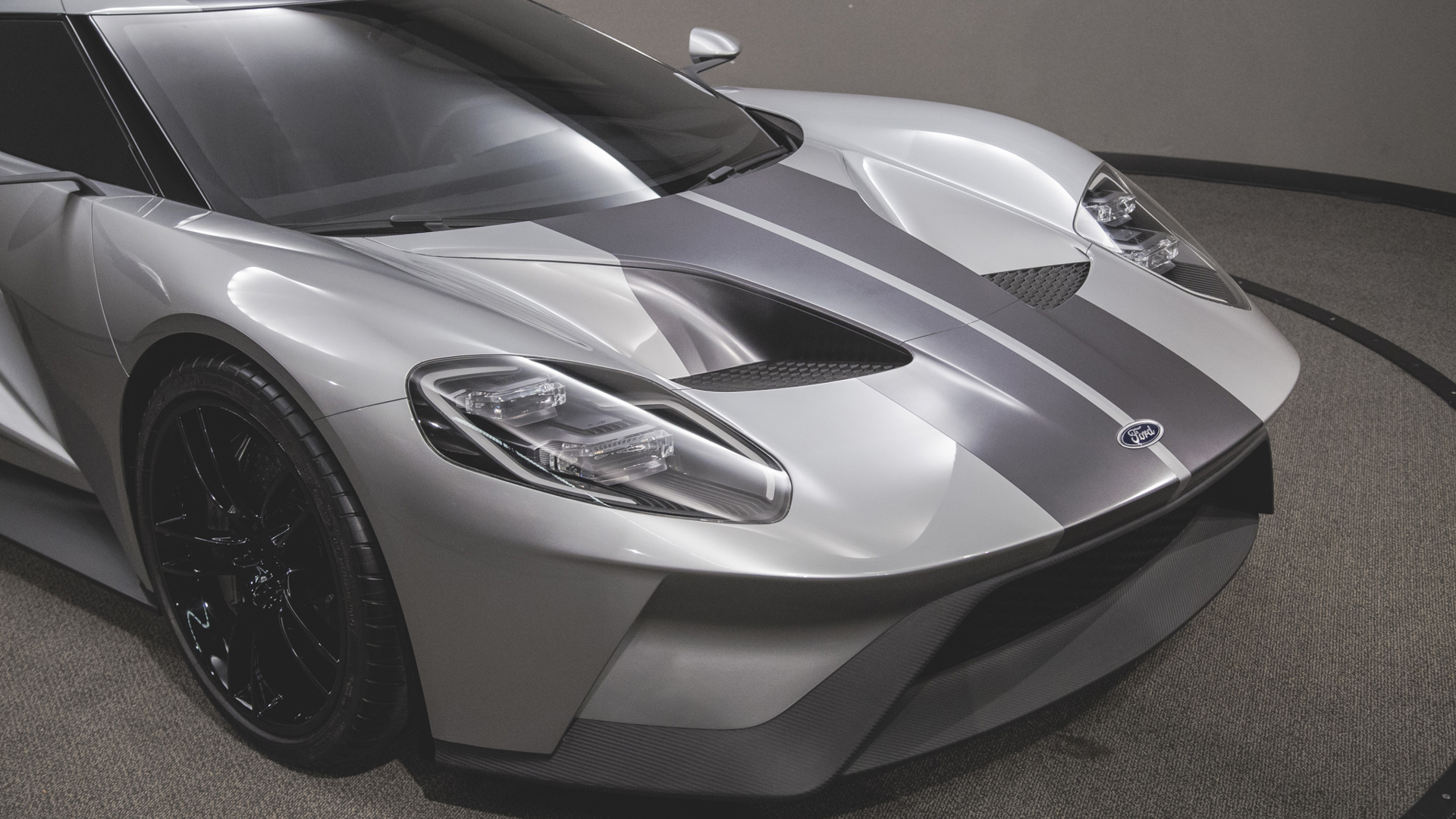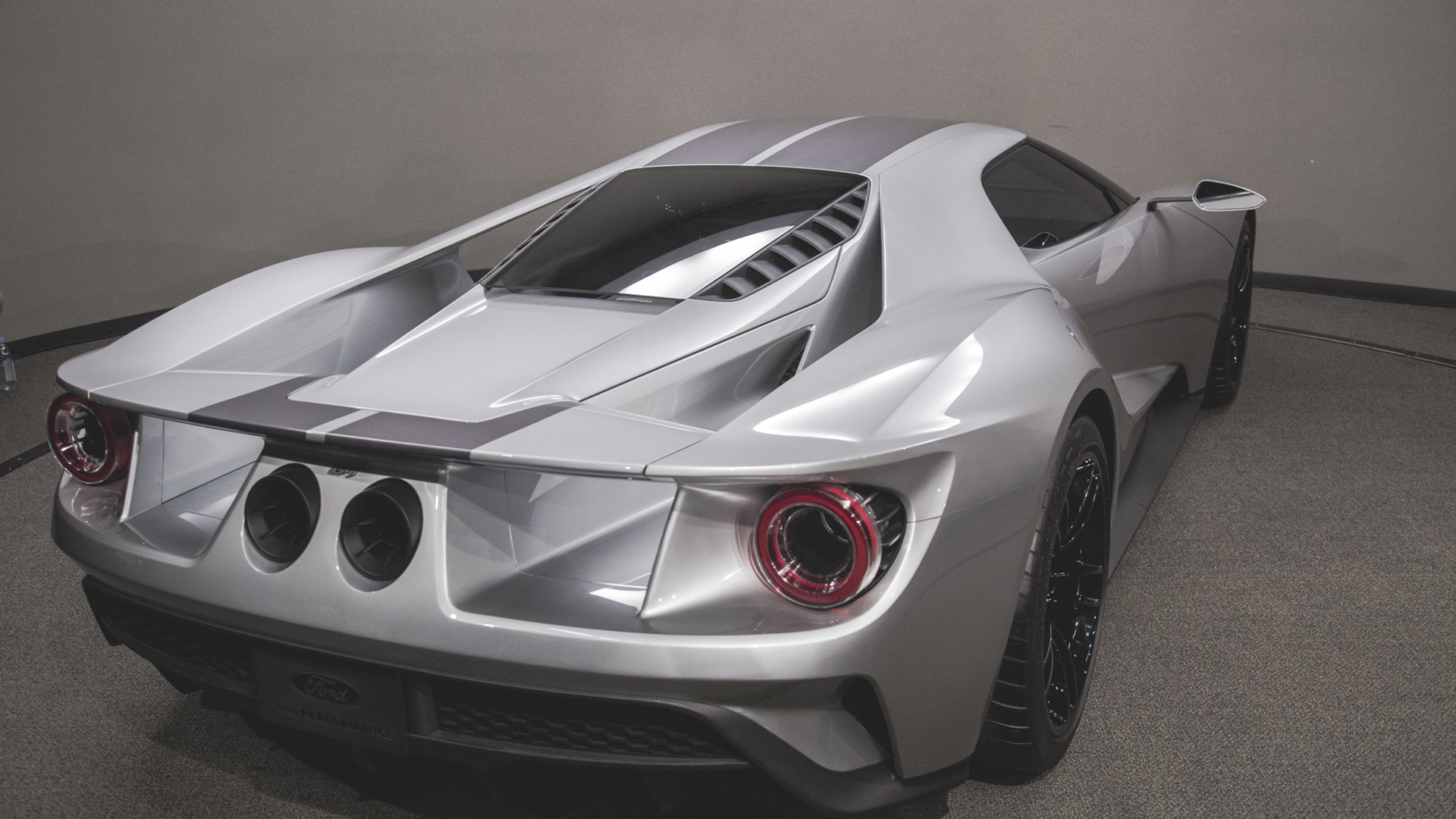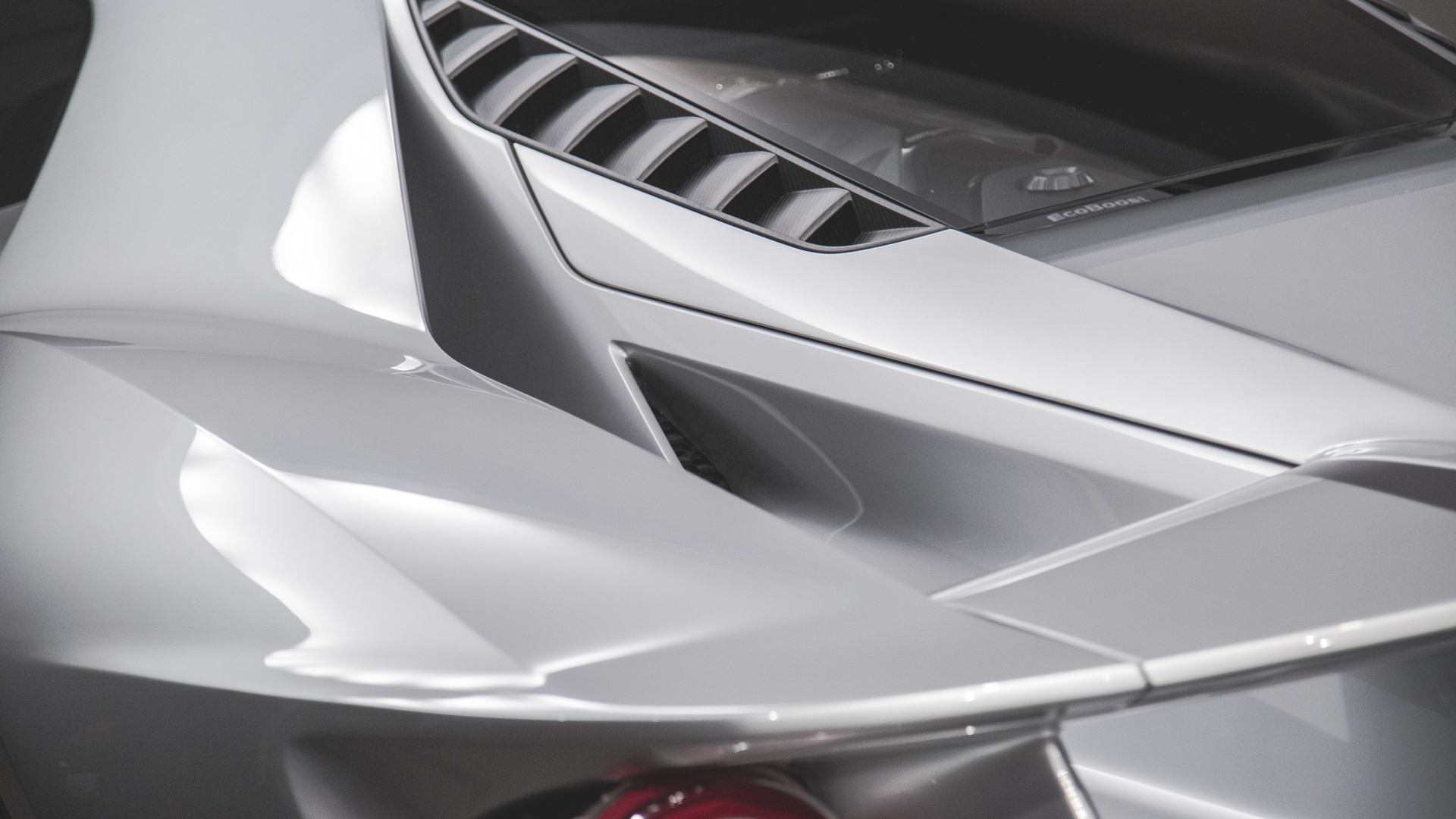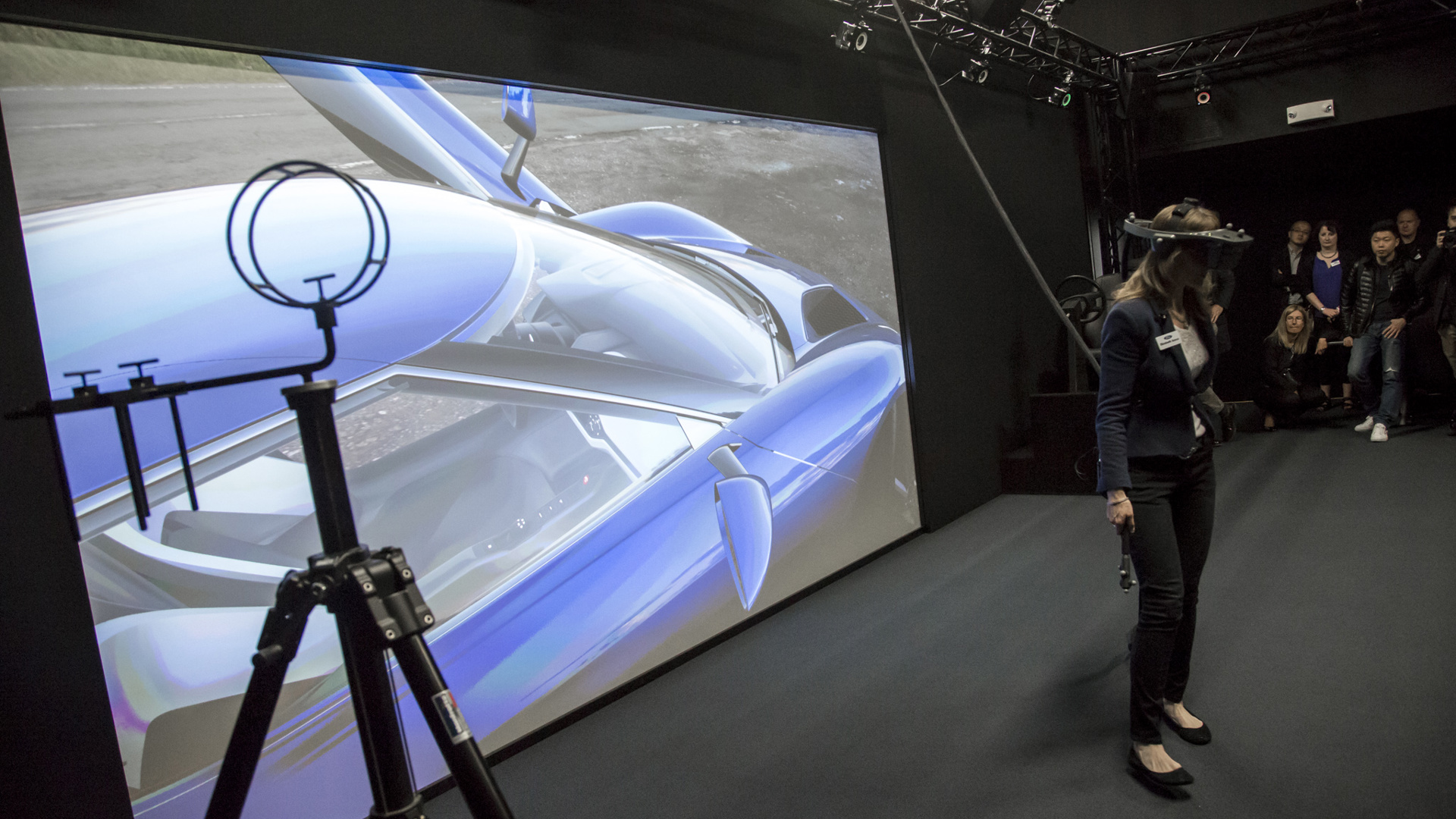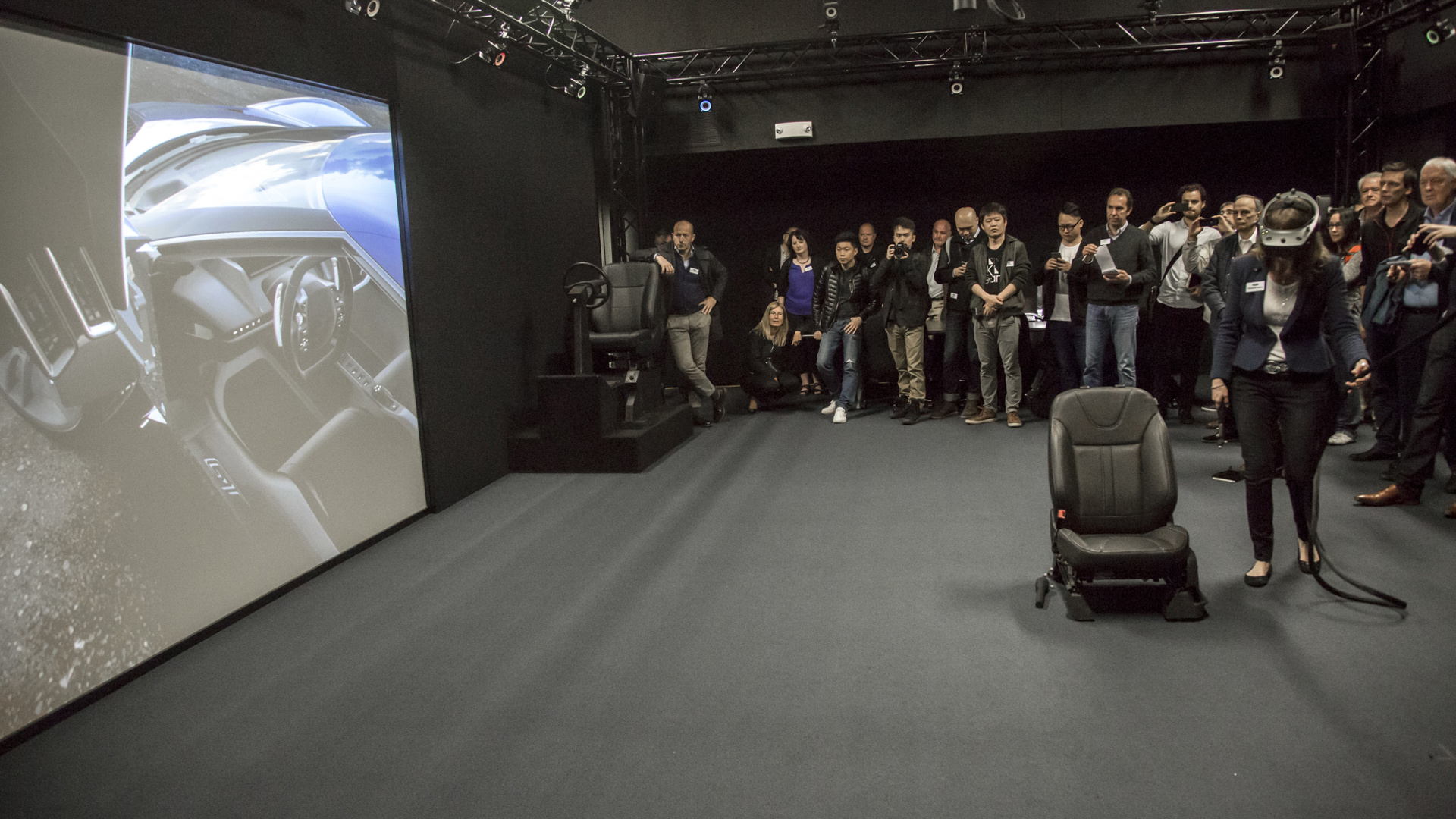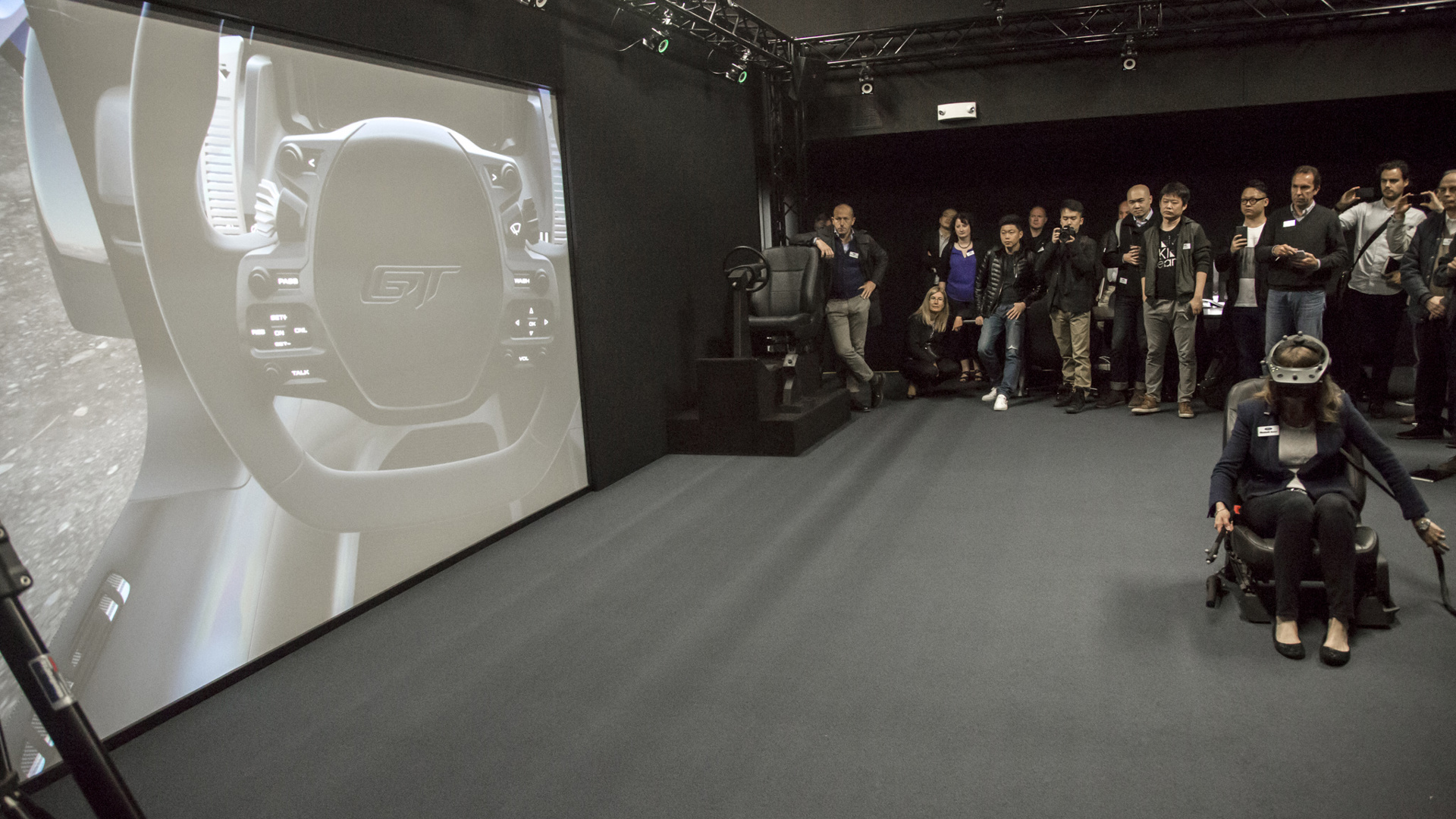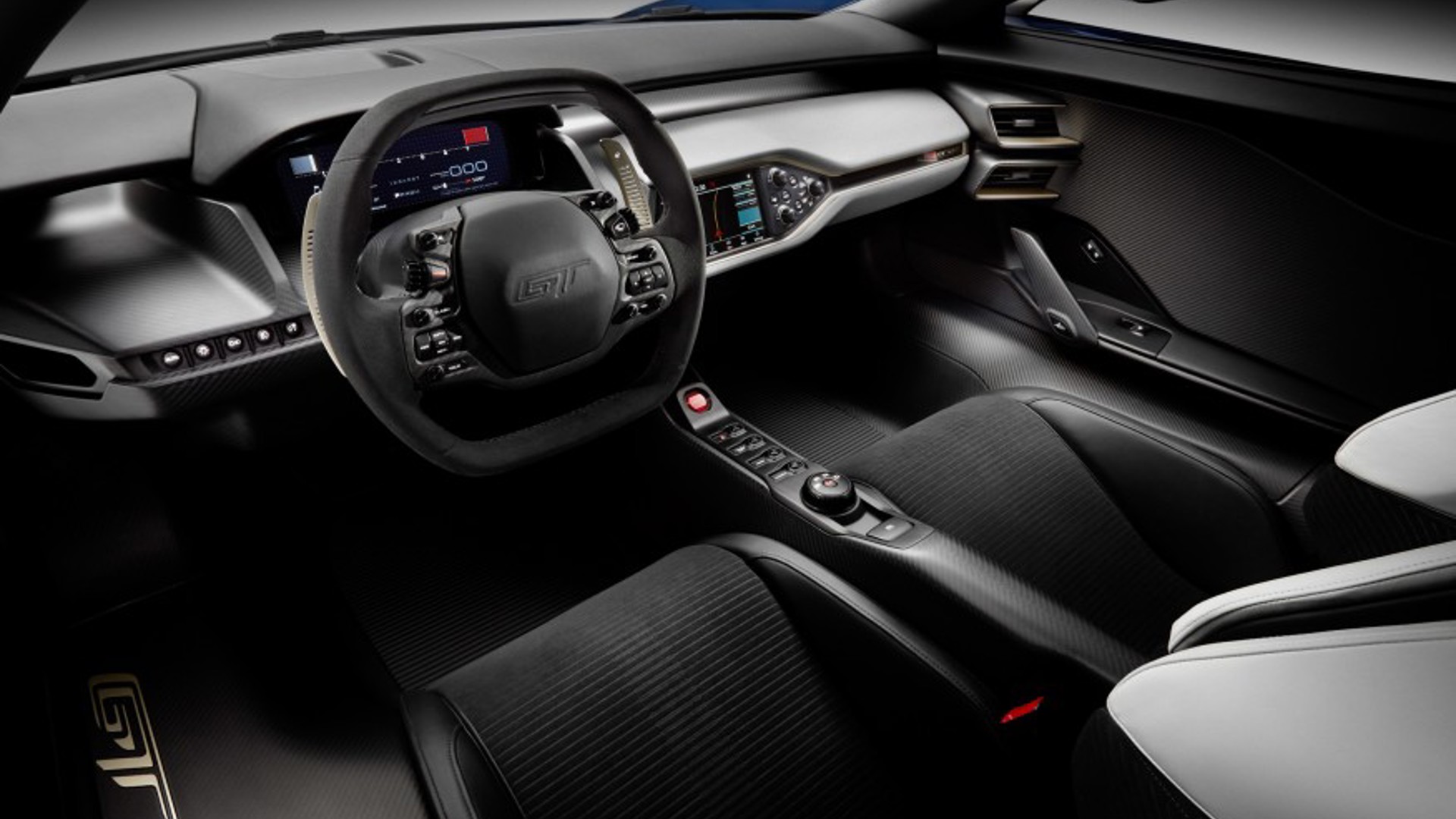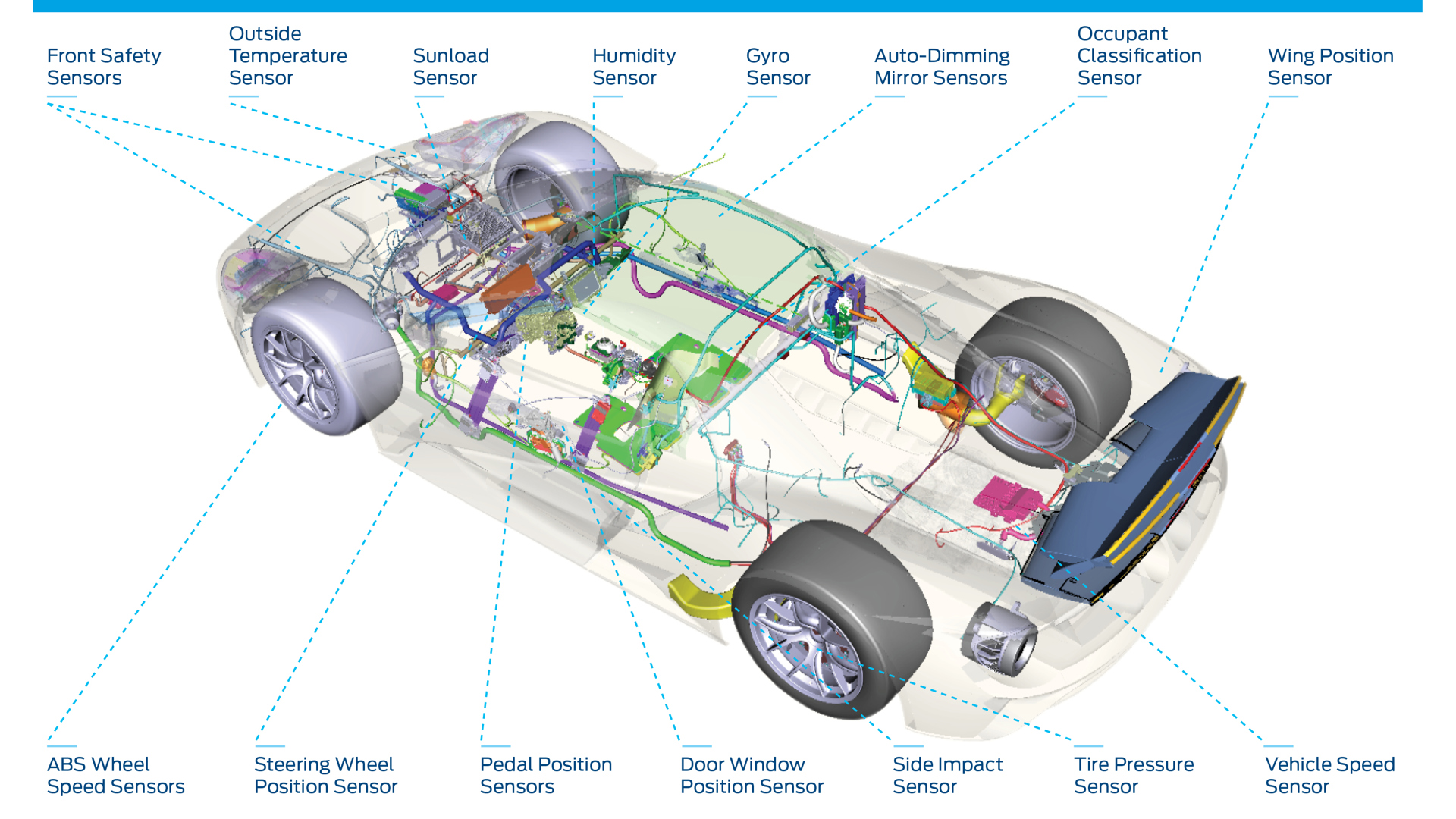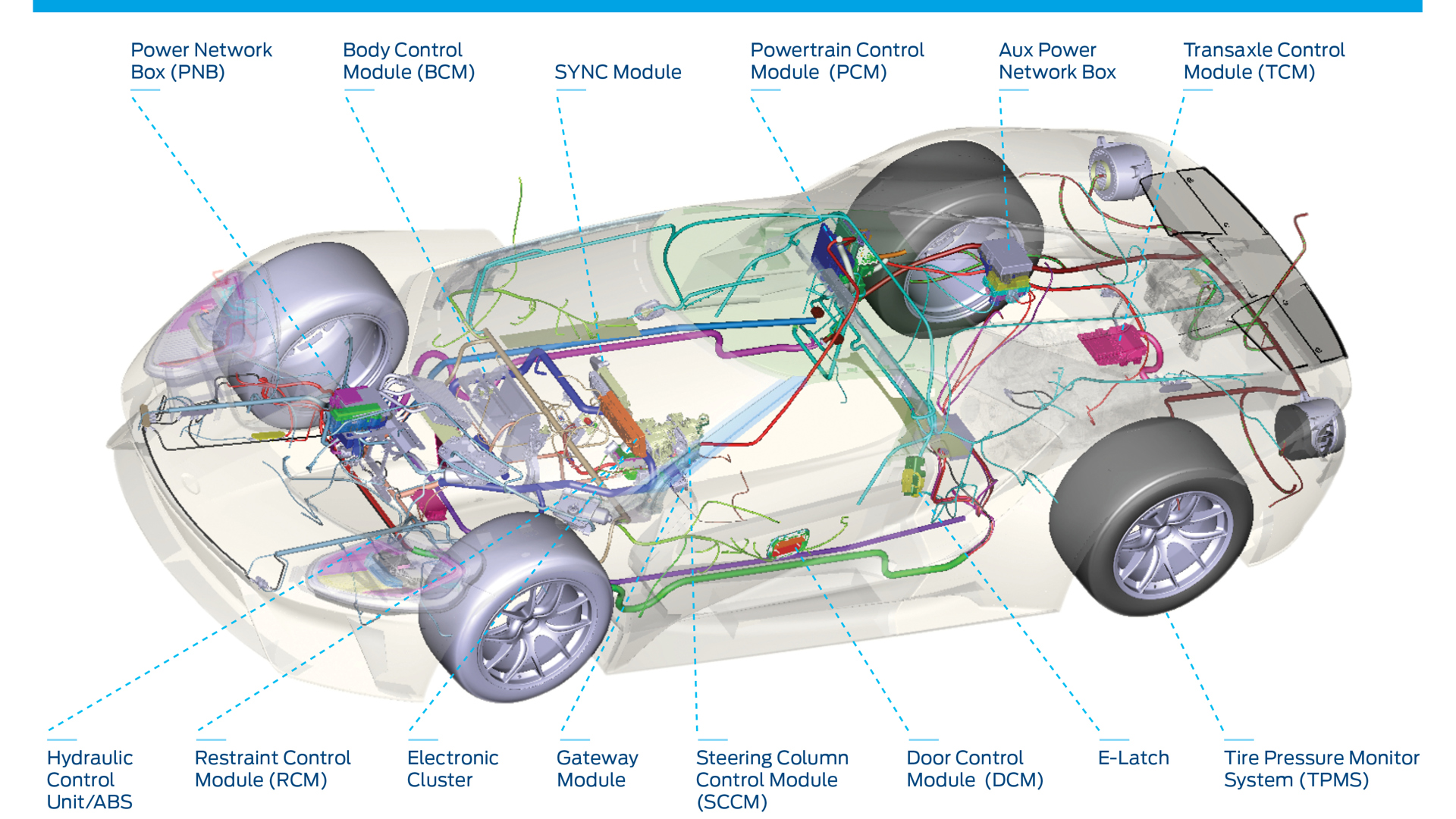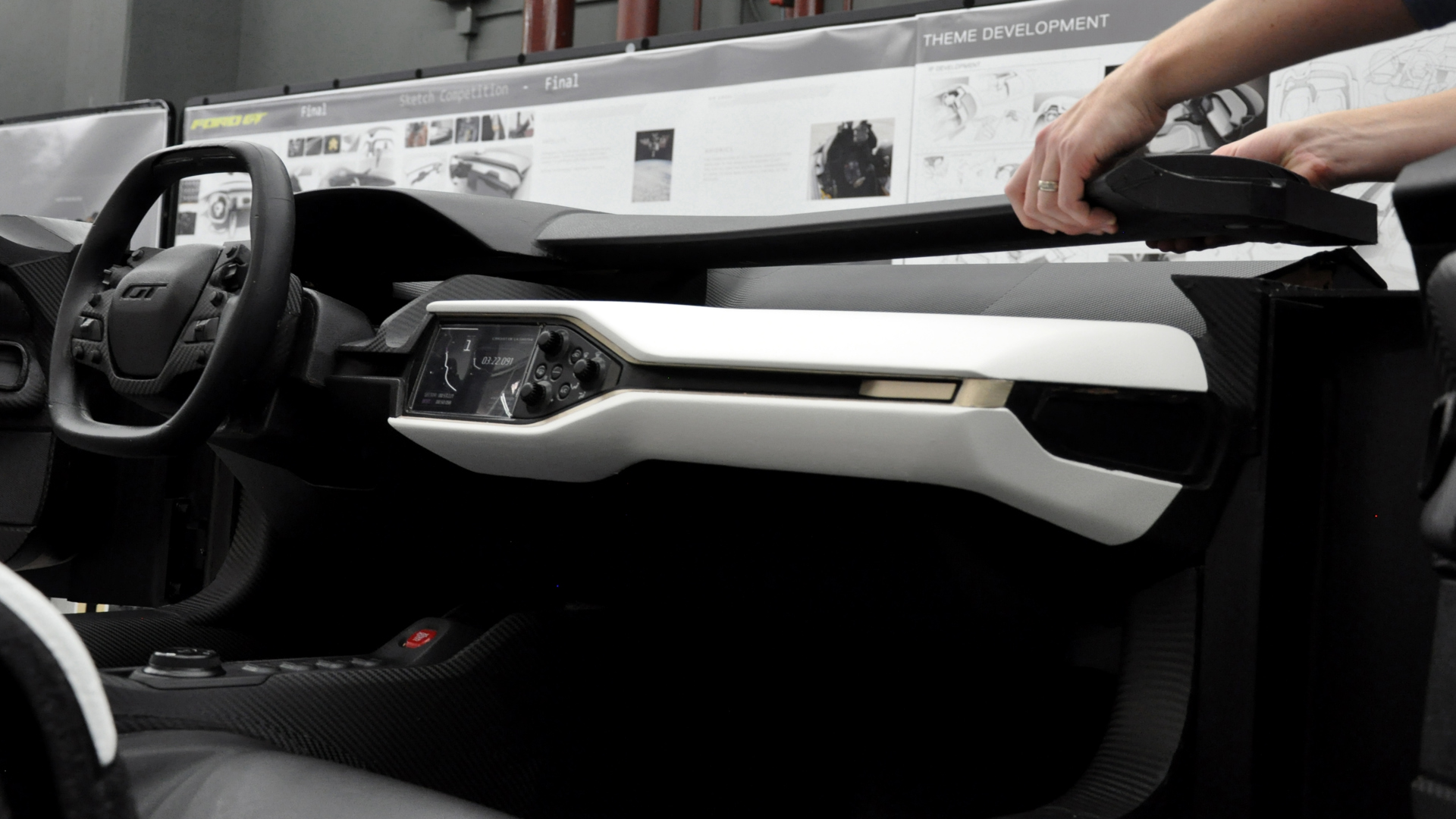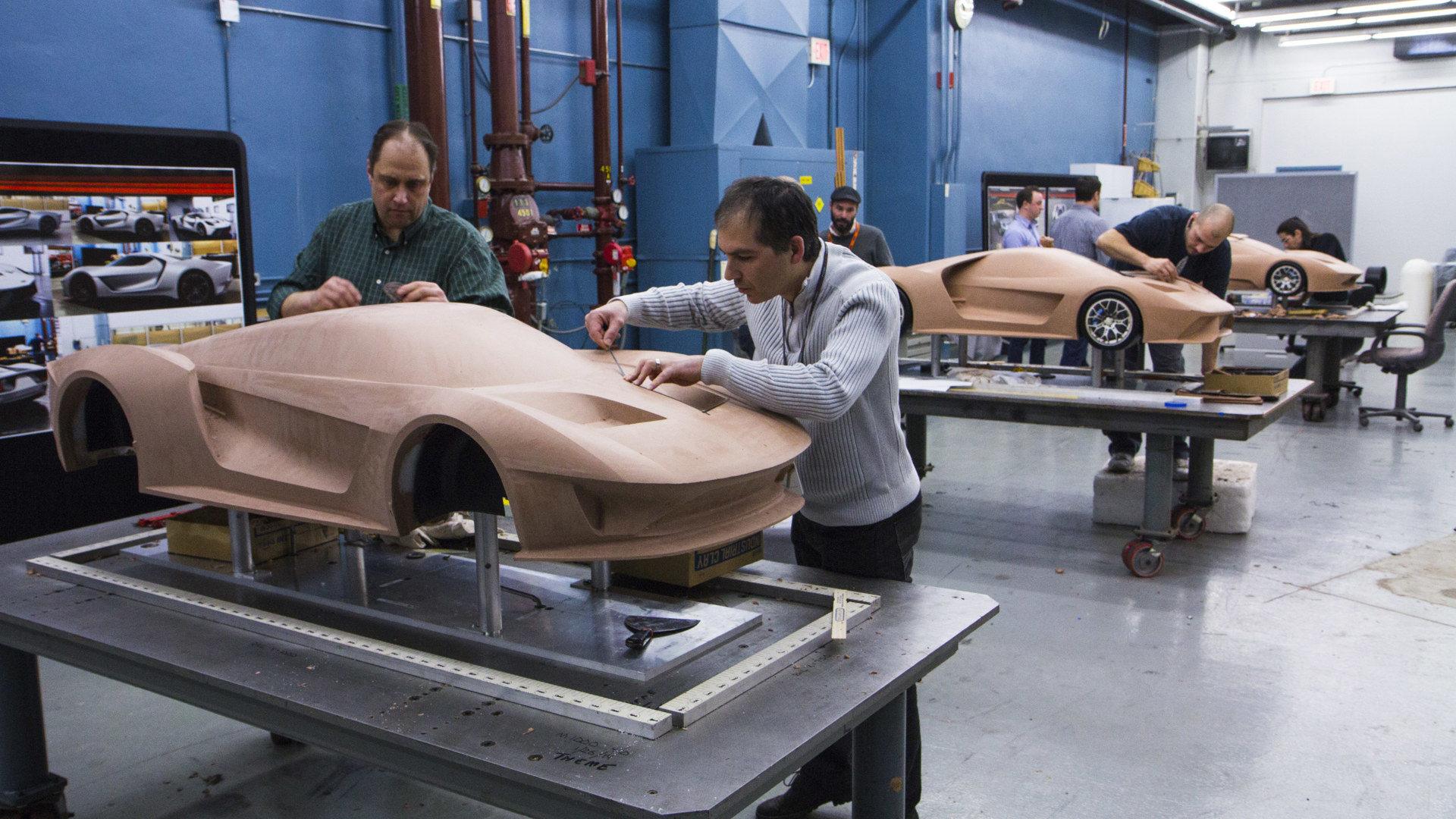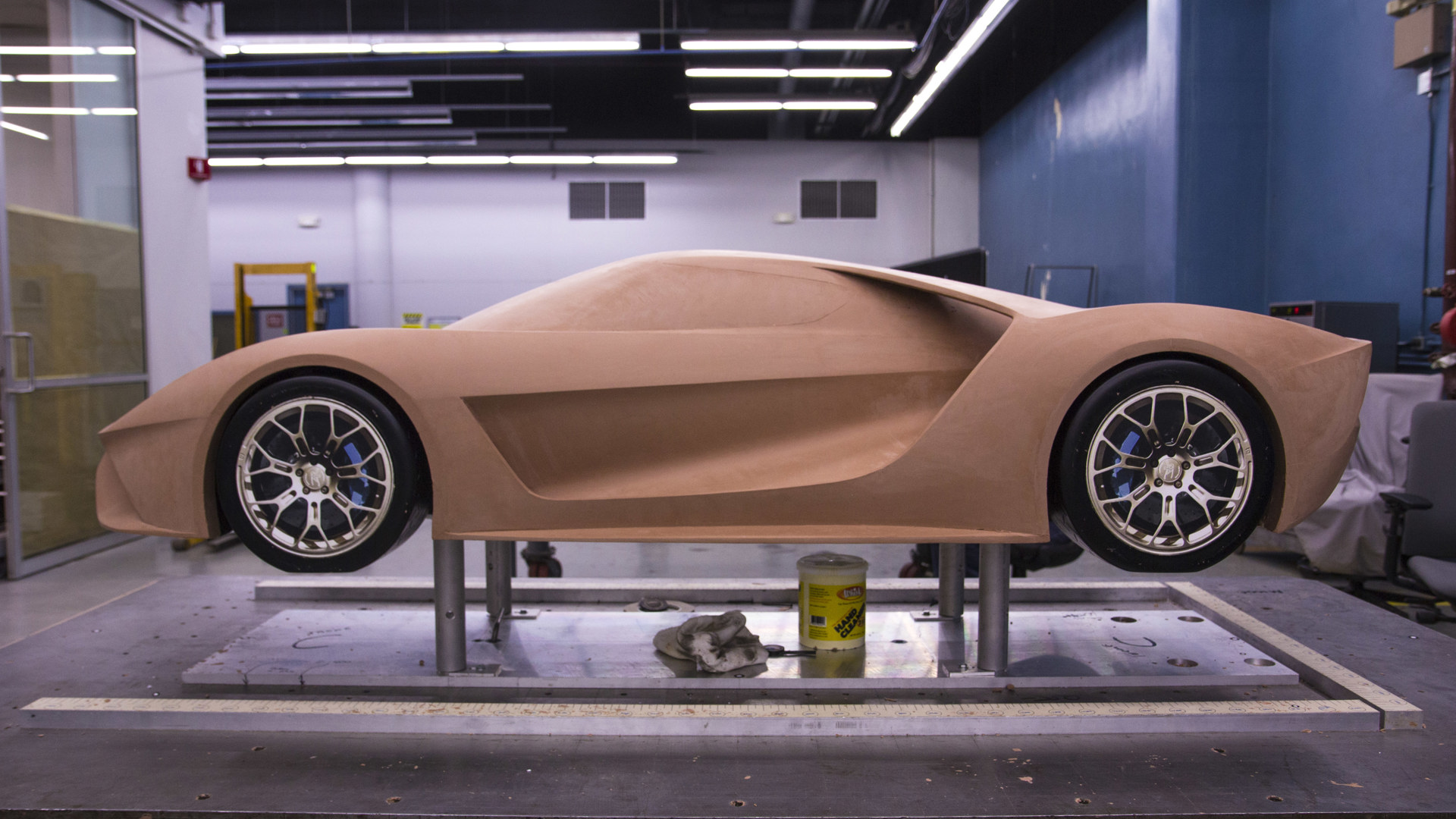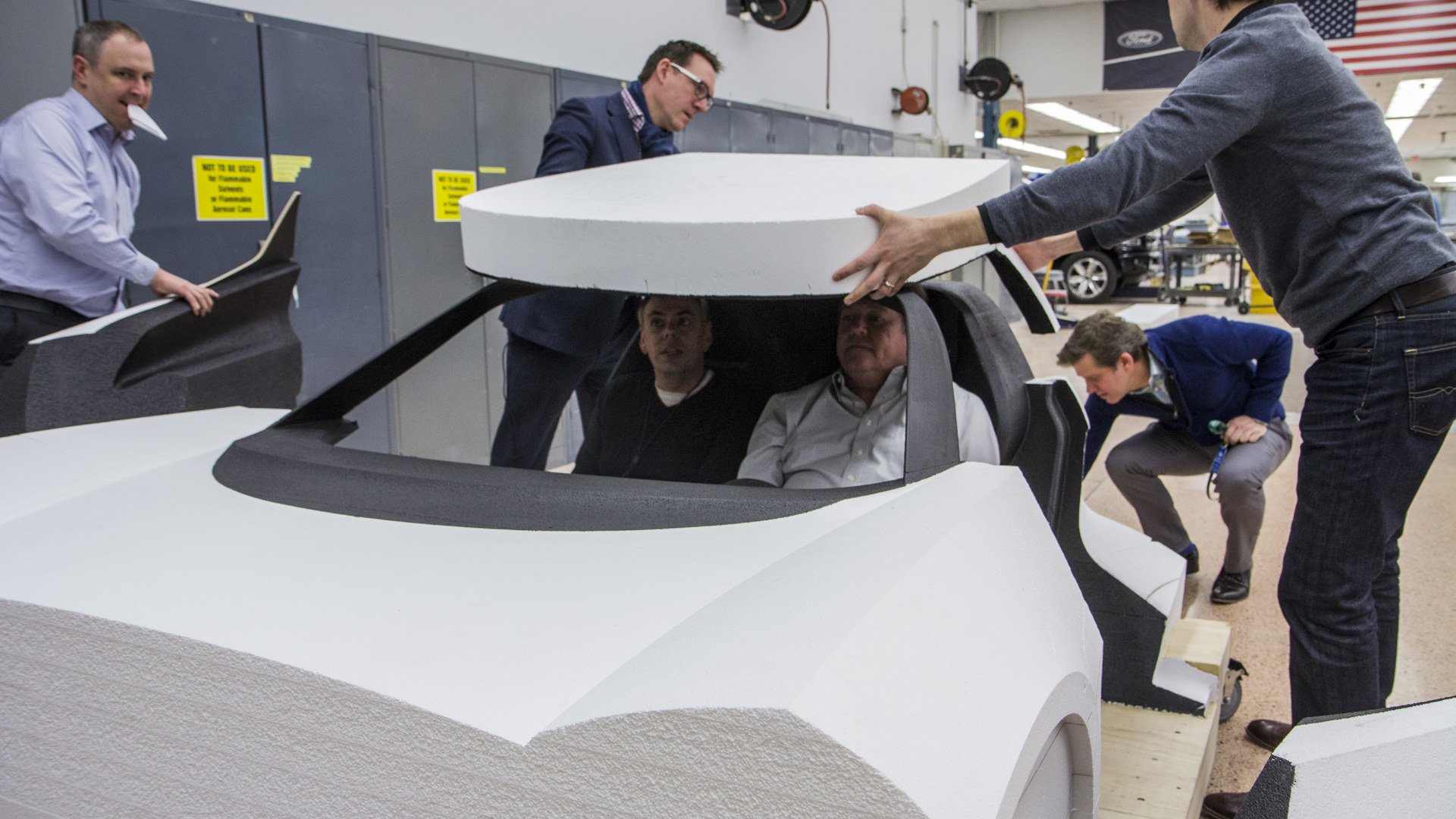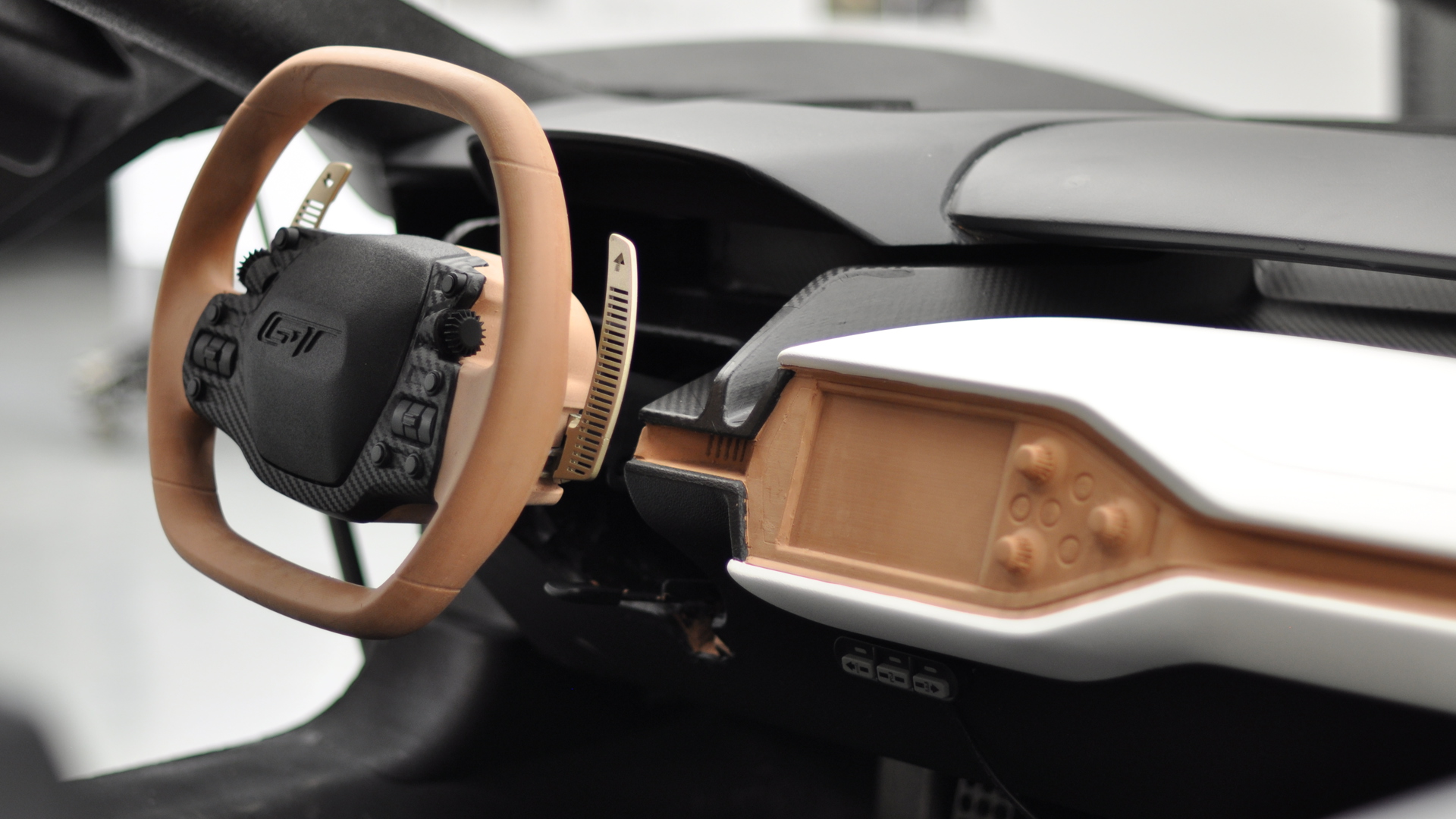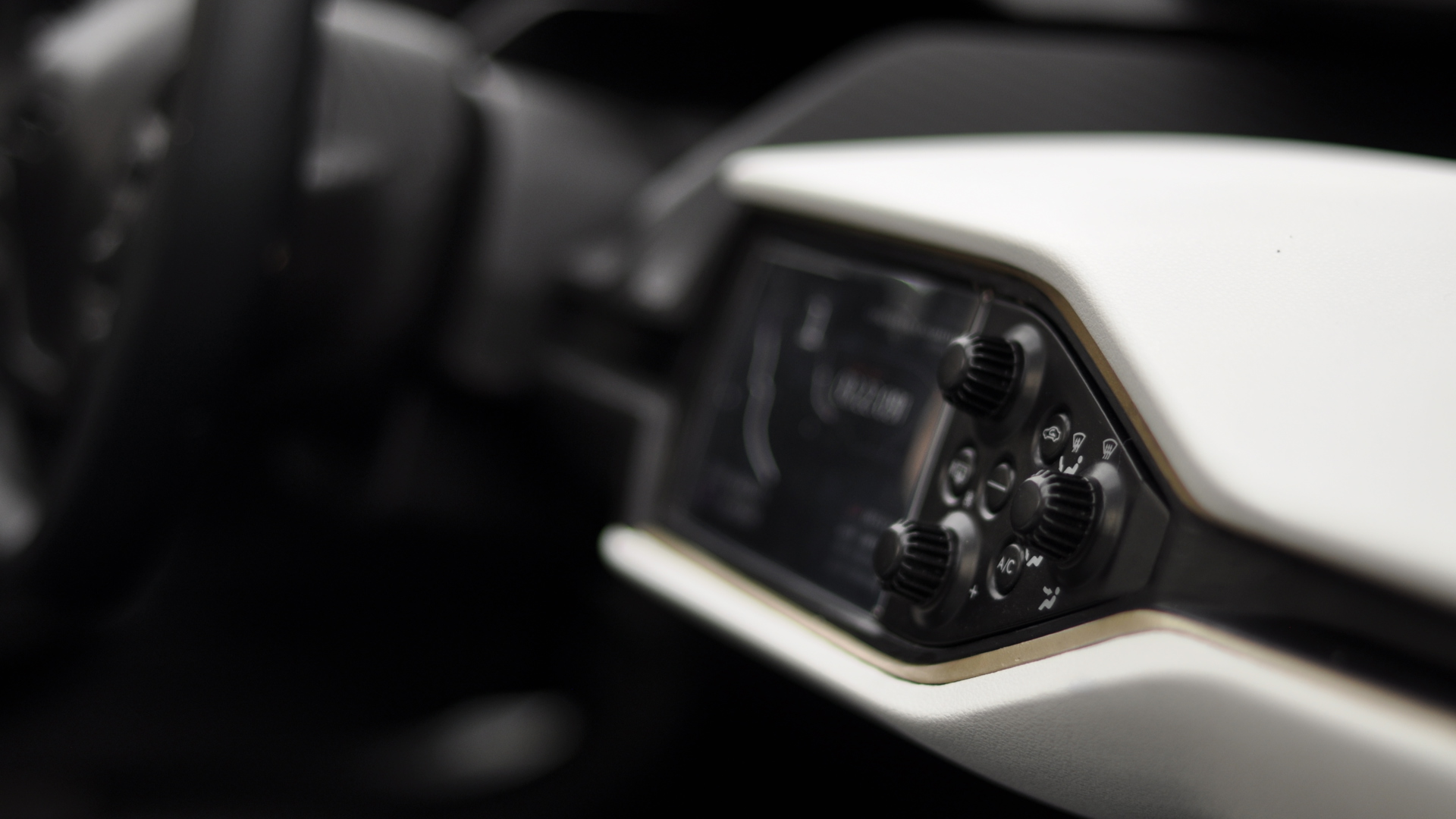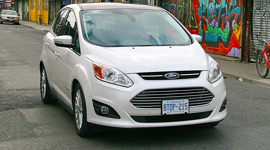Ford unveiled the Ford GT concept five months ago in a surprise reveal at the 2015 Detroit Auto Show, and it’s quickly become one of the most talked about sports cars of 2015. Not too many details were revealed about the high-tech supercar with a legendary heritage, but we were told it was “engineered to keep company with exotics.” Though, one look at the Ford GT and you’d think you were already looking at an exotic.
Last week, I got the invite to Dearborn to refelearn more about the Ford GT. We already knew the it would be packing 600-plus horsepower and would be chock full of techno-wizardry, but beyond that, the car's development was shrouded in secrecy. We were told that before the Detroit reveal barely 30 people at Ford even knew about the new GT’s existence. Working out of a super-secret basement studio, the engineers and designers worked under threat of death if any information on its existence and development were to leak.
Our day began with the a brief about the technology and the psychology behind the design and development of the GT. According to research undertaken by the Innovation folks at Ford, modern day drivers are subject to far too many distractions. While that’s not exactly news to most, I only mention this as the fine folks over at Ford have acknowledged that modern cars have grown bloated with visual distractions and are working to eliminate as much of that as possible.
To keep the driver’s focus at the optimal level, and focused on the road conditions and driving, Ford have attempted to keep distractions to a minimum by taking advantage of newer and better voice command technology, minimizing the need for the driver to take their attention away from steering and situational awareness. The design process behind minimizing distraction centres around driver “workload”. A driver can only handle so much workload at one time so the more resources your brain can commit to driving as opposed to finding the radio station that’s playing Vanilla Ice or the Spice Girls, the better off and safer you are.
The rest of the brief touched on the performance technology under the skin of the new GT. There are a total of 50 different sensors to monitor everything that’s going on with the car. Data processing comes courtesy of six Controller Area Networks (CANs) and these process an astonishing 300 megabytes of data per second. Ford says the GT uses 10 million lines of code and apparently these are all “mission critical.” For reference's sake, we're told 10 million lines of code is more than an F-35 fighter jet (hopefully, the GT won’t be plagued with as many delays and problems as the F-35) or a passenger jetliner. As an old-school gear head who loves driving cars that process zero lines of code, this is a little startling to hear, but let’s hope the GT retains that raw driving sensation that made the originals such a blast to drive. We don’t ever hear about how many lines of code other supercars process, so it’s interesting that Ford decided to take that line of approach to hype up the GT.
Any way you slice it, 10 million lines of code is a lot and if they’re all truly mission critical, let’s just hope they’re not running on a Windows based system…
Next up on our media brief was a hop over to the “Virtual Reality” Studio. The VR studio at Ford isn’t solely used for GT development but like all other Ford models, the GT’s design was optimized with visibility, convenience and function in mind. The demonstration began with an engineer donning a set of VR goggles with a wall projection of what they were seeing. An image of a Ford GT sitting on a picturesque countryside road in England popped up. Our demo was hosted by none other than Elizabeth Baron, virtual reality and advanced visualization technical specialist at Ford. Her demo began with her walking up to the GT, opening the gullwing door and taking a seat in the driver’s command chair. We had a perfect view of what it would look like to sit behind the wheel of the GT.
The interior design process was demonstrated to us to show how much work goes into each vehicle. Clearances are checked, visibility on all sides is checked. Changing and checking seat height, steering wheel placement, and control layouts are all part of the design of a new car. And what better way is there than recreating each change digitally for speed and efficiency?
For the final part of our brief, we were led deep into the bowels of the Ford Development Center to the now-famous top-secret Ford GT basement studio. For this writer, this was a once in a lifetime treat, as access to a place where the magic happens for a car like this is truly a privilege. Being able to talk shop with the likes of Jamal Hameedi, Chief Engineer at Ford Performance and Craig Metros, Exterior Designer Director, Ford of the Americas, among other big wigs at Ford, is a real treat.
The first part of the room was taken up by a variety of full-size foam and clay models of the GT in various stages of design. It was interesting to see the small differences in the GT models and it was clear that every single line of the final design was clearly thought out; the one thing all the models had in common was that they were all clearly models of a Ford GT--it’s unmistakable. It’s really a design triumph when you can take an old car, thoroughly redesign it from the ground up and end up with a product that’s clearly a direct descendant of the original while also looking 100 percent modern or even futuristic.
In the background, a series of boards were lined up against the wall, detailing the design process via sketches, drawings, photographs of the previous two GTs and even pictures of other supercars, undoubtedly, for borrowed inspiration and reference.
Moving further into the studio, we were greeted by the sight of a complete and glorious Ford GT. With its low roofline, impossibly sharp lines and those flying-buttresses (a-la McLaren), the car has a tangible presence--you feel like you’re in the presence of royalty. Unfortunately, we couldn’t get a look at the interior of the car as the windows and windshield were blacked out. We’re told every single part of the sleek and compact Ford GT serves a purpose. The entire car was designed around the compact 3.5L Ecoboost V6, pumping out 600-plus hp. V6 naysayers: we don’t want to hear any complaints, please. Yes, we all love V8s, but it’s 2015 and this the future whether we like it or not.
When you design a car around a specific engine, you have the benefit of engineering your car exactly the way you want to. After the initial design process and countless virtual wind tunnel excursions, Ford settled on an extremely narrow rear greenhouse. That’s the bit of the car that houses the potent Ecoboost-six and that’s where the distinct flying-buttresses come in. With the narrow rear greenhouse combined with the buttresses, Ford have managed to achieve the wind tunnel results they were after.
Ford says the design of the GT produces zero low-pressure zones. In aerodynamic language, this means that lift is cut down to a minimum while maximizing air flow around the body and achieving optimal downforce performance. Most cars suffer the most, aerodynamically, when the air passes over the roof and hits the drop created by most rear windows. This leaves a space or vacuum of air where aerodynamics go out the window (literally) and messes with your flow. It’s clear the rear end of the GT was designed to cancel out the low pressure zones and one doesn’t need to be given marketing speeches to see how the design of the GT’s rear greenhouse cuts down on potential pressure drops where most cars suffer.
In short, without any low-pressure zones, the GT cuts through the air while remaining sturdily planted to the earth, enabling the GT's driver to go fast while looking good.
The dual centre exhaust exits high up on the rear end like the previous generations. This design ensures a very direct flow of gas expulsion and also doubles as an awesome place to mount a camera to capture taillight-lit flashes of exhaust flame-spitting. Speaking of taillights, not only do they look amazing, they serve two functions: obviously, they’re taillights, but what’s cool about them is that they’re part of the cooling and air flow system. Heat from the mid-rear-mounted engine bay gets sent out through the holes in the centre of the taillights as well as all the other vents and grilles. That’s pretty awesome.
The massive ceramic brakes hiding underneath the massive forged wheels (Ford are also testing carbon-fibre wheels) promise you almost as much fun decelerating as you’ll have accelerating.
The front bumper is simple, and all business. A blend of smooth and sharp lines scream proper aerodynamics. The headlights look like compact laser beams that promise all the light you’ll need. The side profile is hard to describe as it’s all angles and juxtaposed skirts, door, buttress—all somehow brought together for a truly unique look.
The rear end combination of the narrow rear greenhouse, integrated spoiler, taillights, diffuser, exhaust and various functional vents and grilles tie the entire package together into an unbelievably sexy package. Unlike Instagram-famous “models and celebrities,” this car has no bad sides.
The final part of our studio tour brought us to the models of the cabin. I wasn’t allowed to take photos inside the studio, so unfortunately, I can’t show you just how cool the setups were. We were able to see in detail the work that went into designing the most efficient and least distracting cockpit possible. The steering wheel reminds me of a cross between an F1 car and a minivan’s wheel. As part of their minimizing distraction strategy, Ford wants you to be able to do everything via your steering wheel and voice commands. Forget installing a simple Sparco three-spoke on this thing if you want to be able to do something ridiculous, like, switching a turn signal or your windshield wipers on.
The seats look like something out a futuristic anime movie. They’re stunning and look very, very inviting, supportive and functional, not to mention gorgeous. For maximum weight savings, the seat bottoms are fixed directly onto the floorpan. For adjustment, the backrests will adjust roughly 10 degrees forward and backwards, and the steering wheel telescopes nearly eight inches to help you dial in the perfect setting. Due to the fixed seats, the entire pedal assembly also gives you eight inches of adjustment to ensure that most drivers can attain the optimal seating position.
All of this innovation rests inside the carbon-fibre cabin tub, manufactured by Ontario's own Multimatic Motorsports and Engineering. They'll also be manufacturing the carbon-fibre body panels.
Although the cabin looks to be quite compact, we’re told that a six-foot-plus designer fit comfortably in the cabin. Despite all the innovation, expect ingress and egress to be quite a pain the ass for larger drivers.
When the design team was given the green light on the GT, they were given three mandates from Ford. The new GT has look unmistakably like a Ford GT—i.e, be instantly recognizable. It also had to look modern, and also sexy and seductive, and finally, the GT must embody efficiency and performance. While no one has driven the car yet, it’s pretty clear Ford have met the exterior design criteria to a tee. Let’s see if Ford also nails all the performance mandates once the GT is unleashed onto a road and track near you.
While I wish I was able to give you the full scoop on the suspension setup on the new GT, Ford haven’t released any details on it yet, but judging by the design and engineering on the rest of the car (and the massive ceramic brakes), you can be certain it will be highly advanced and very, very trick. For now, enjoy the pictures.
While we won’t see any Ford GTs on the roads before sometime near the end of next year, the GT will most likely be campaigned in the 24 Hours of Le Mans, giving us a taste of what’s to come. There’s been no official confirmation from Ford but this is a logical conclusion to draw.
